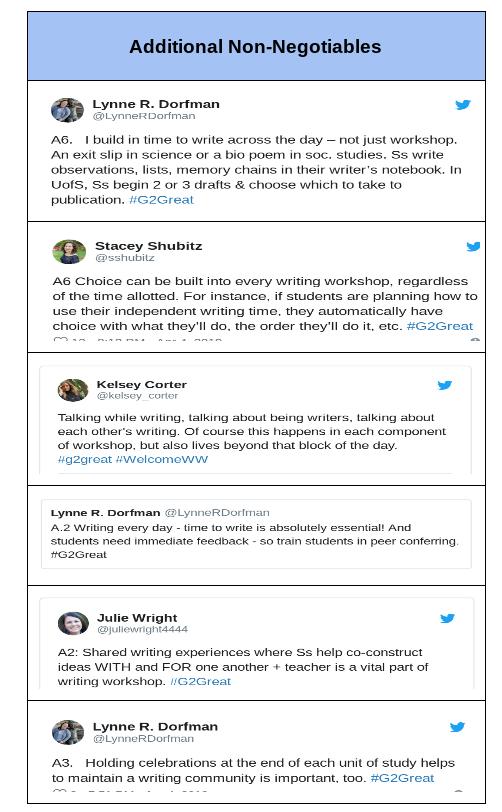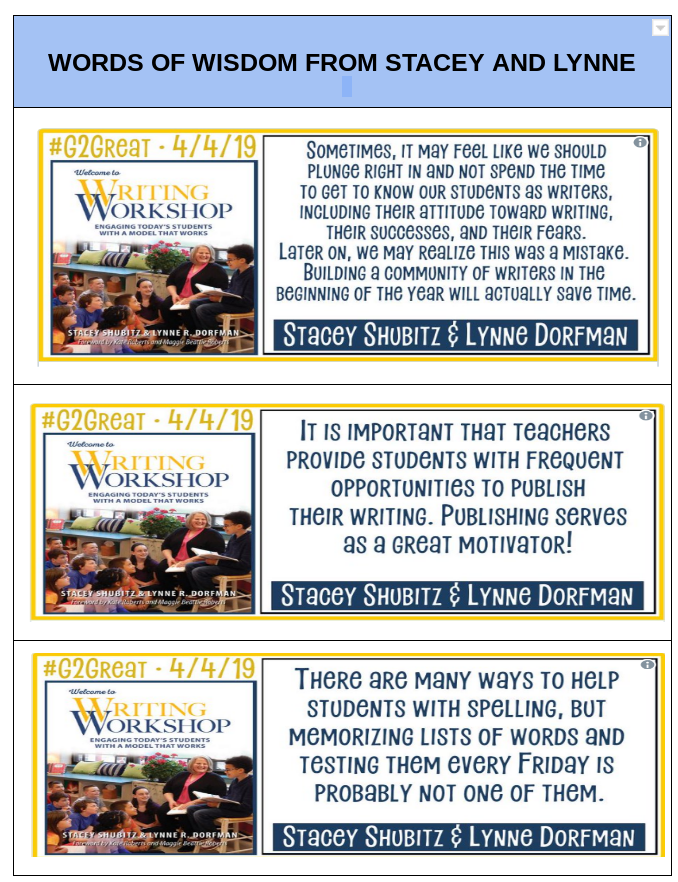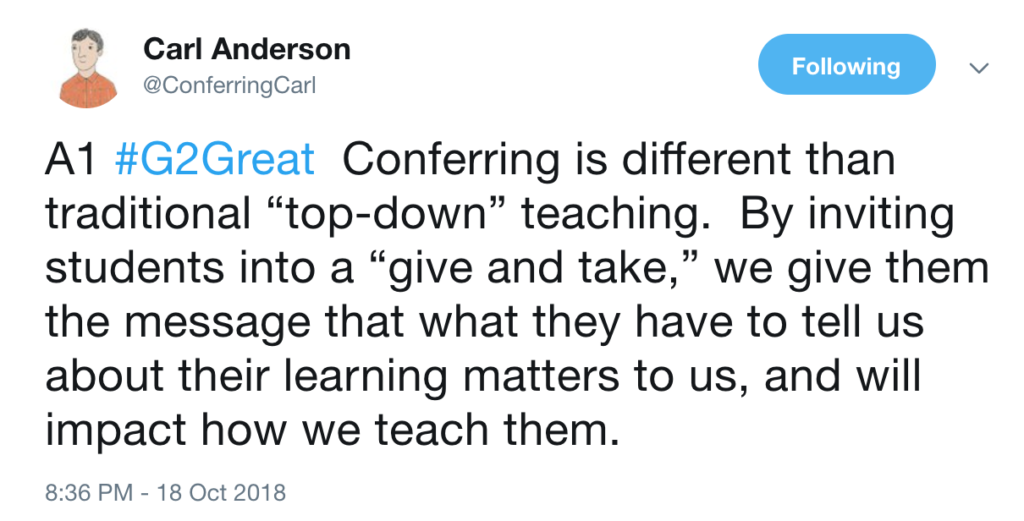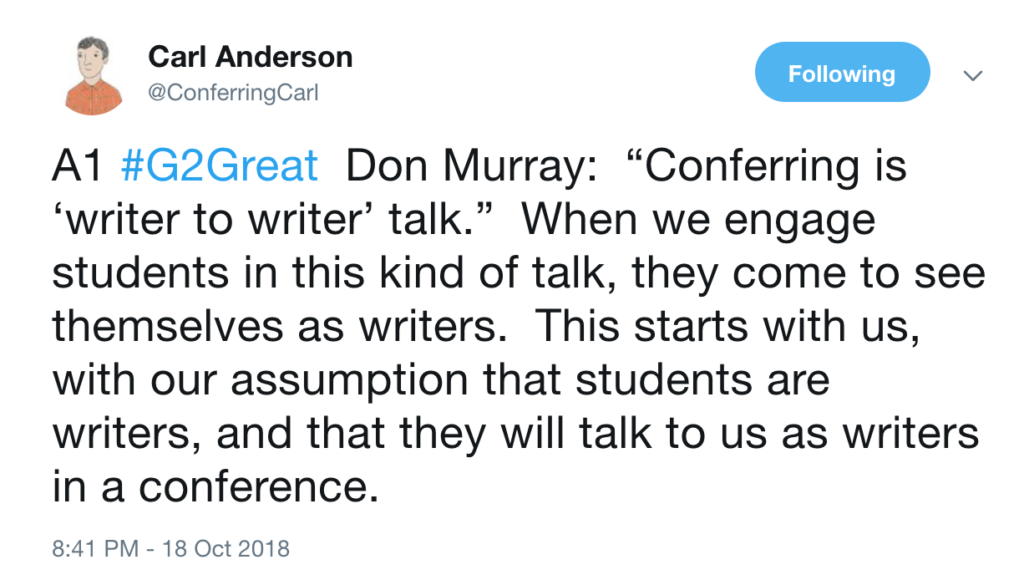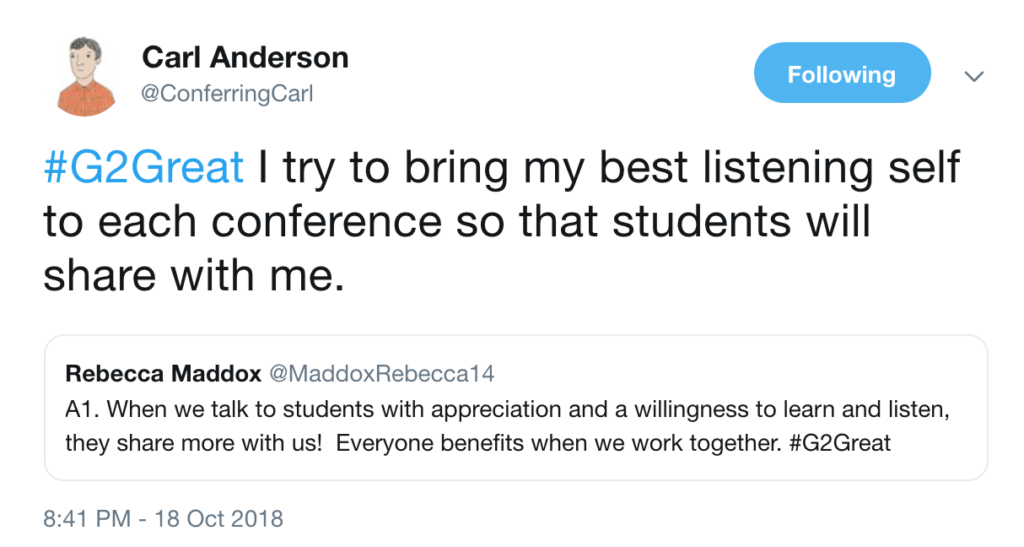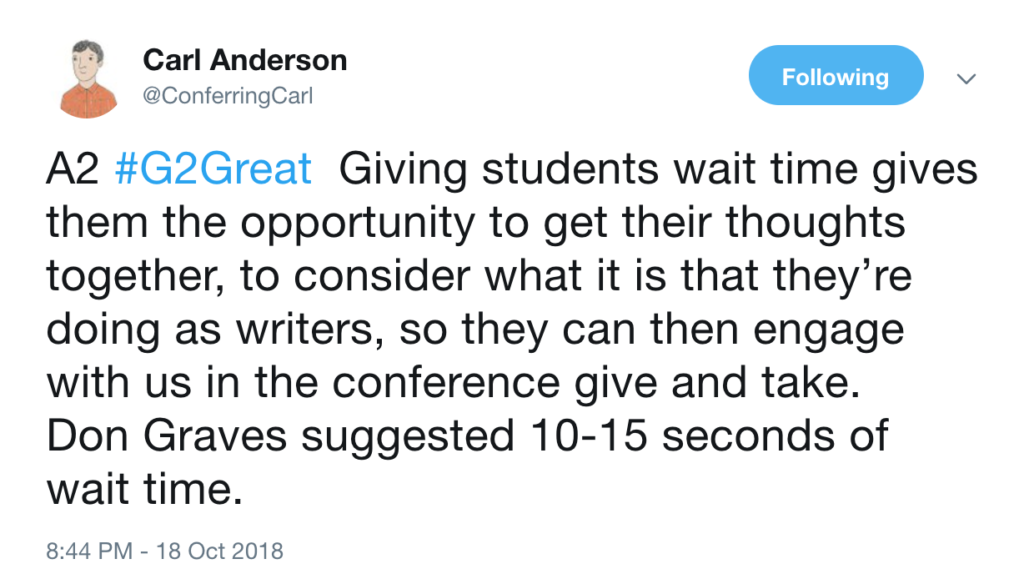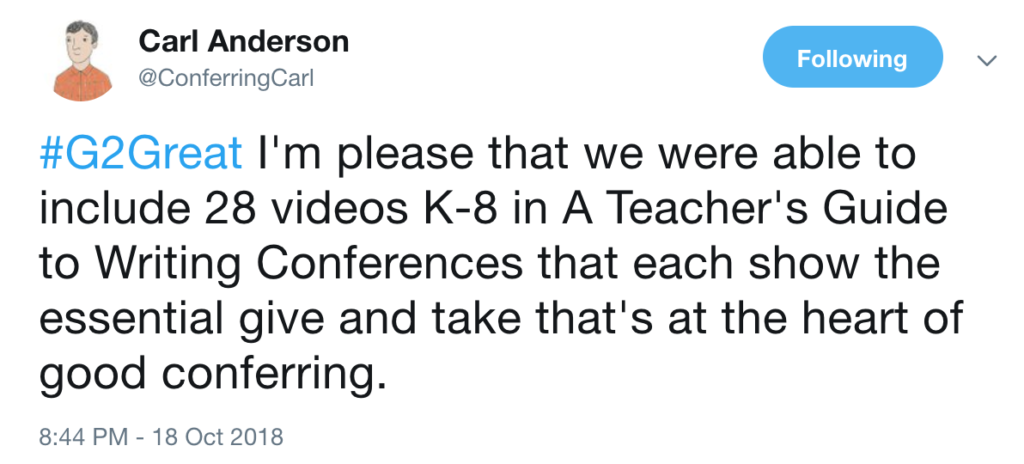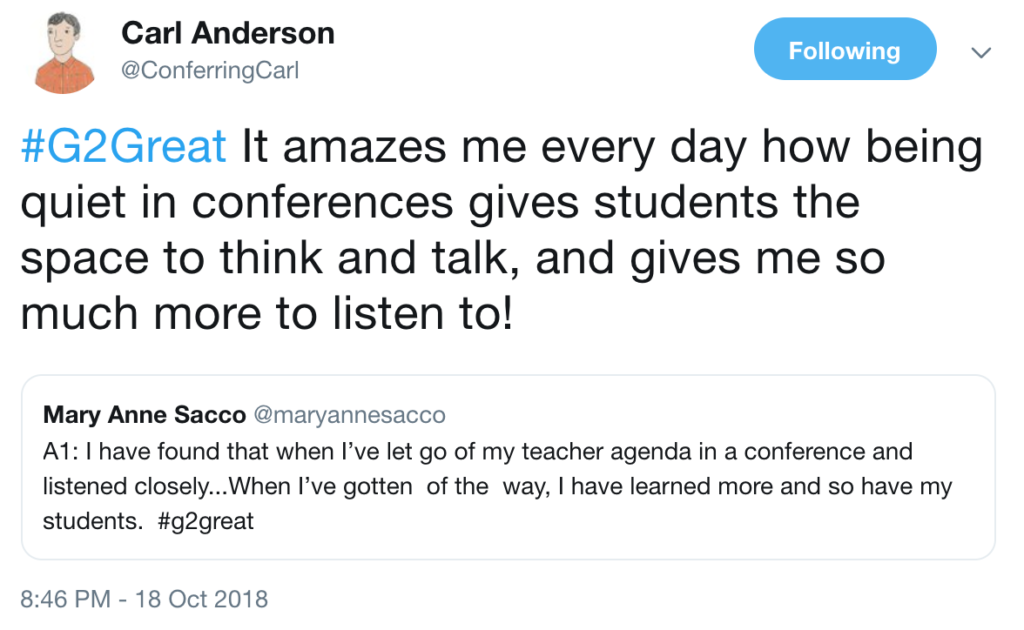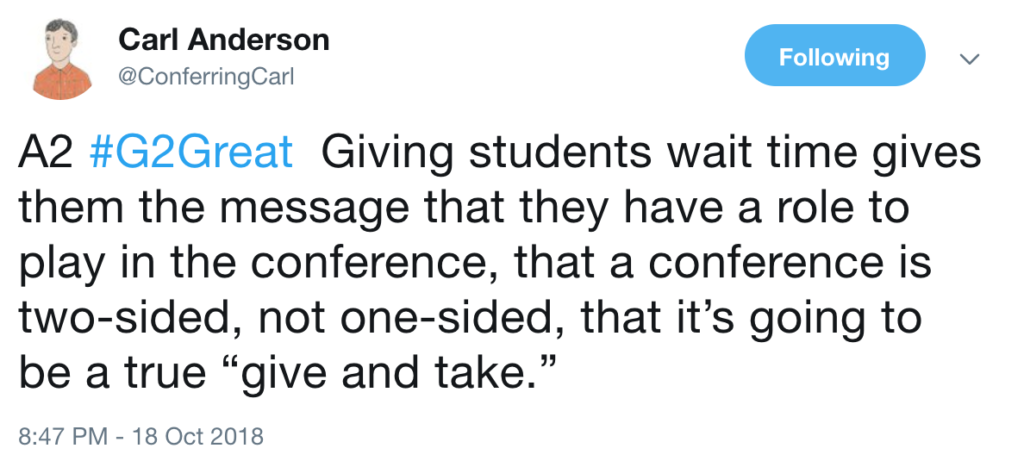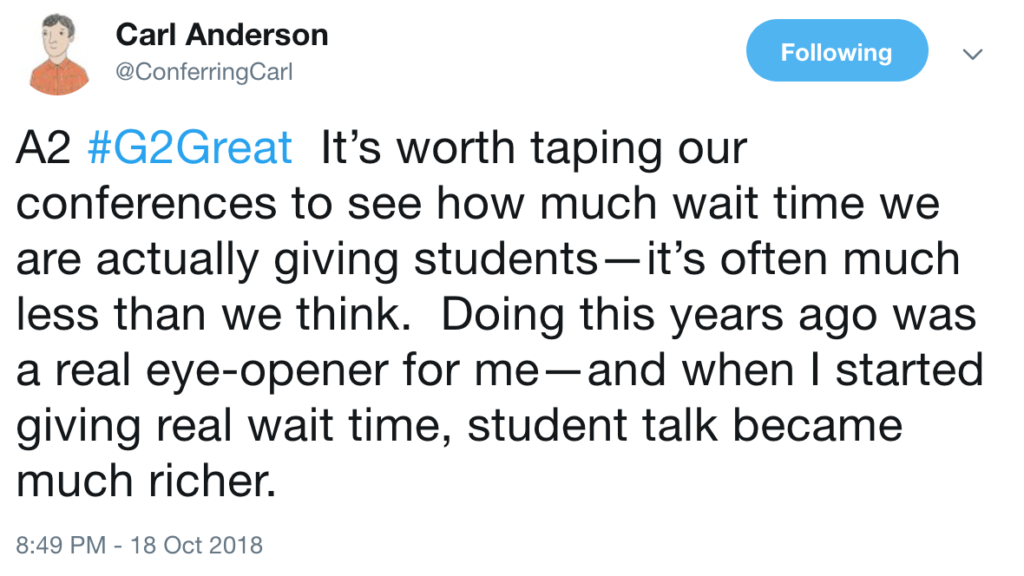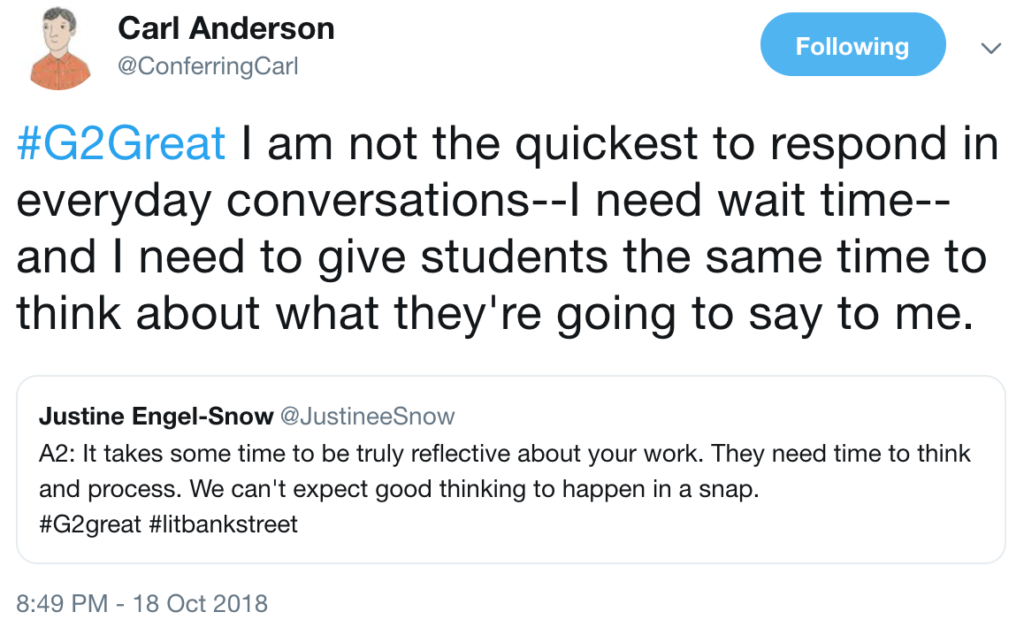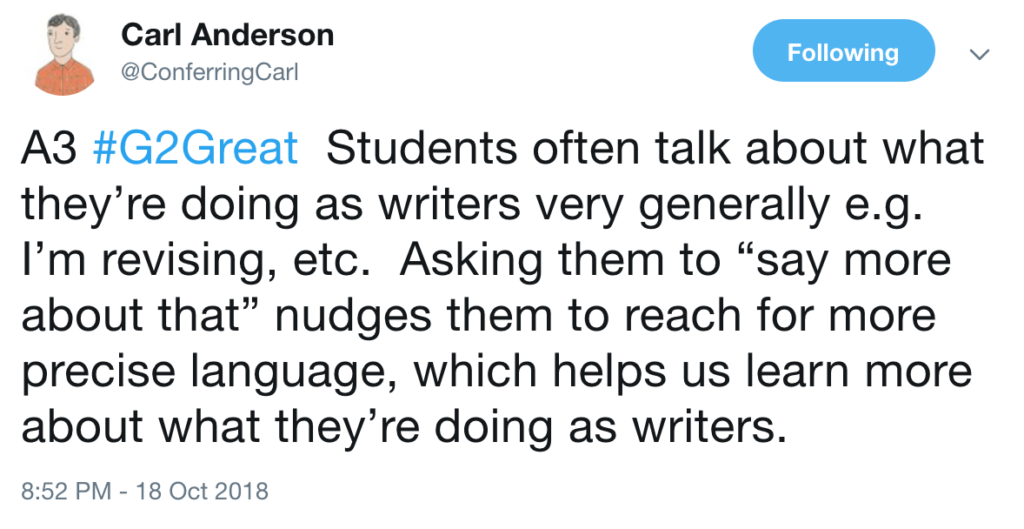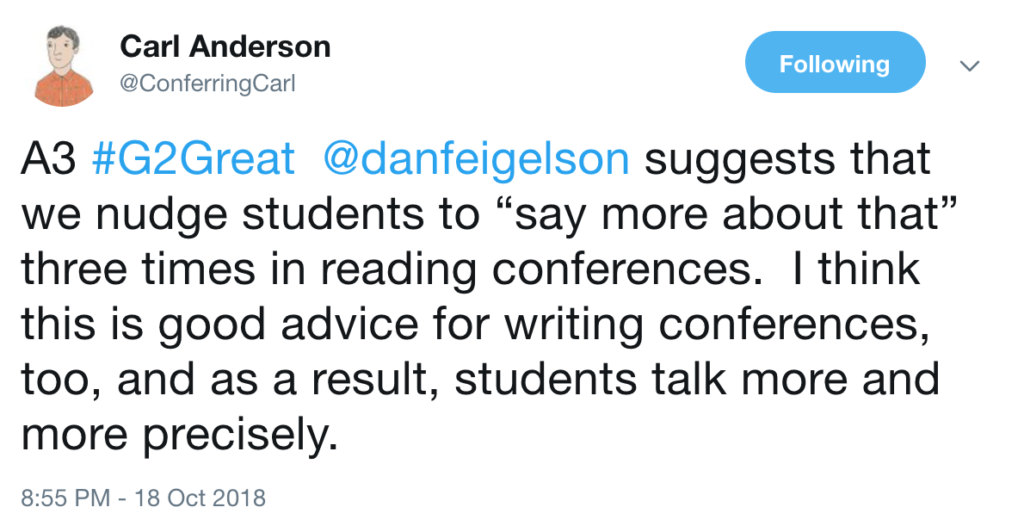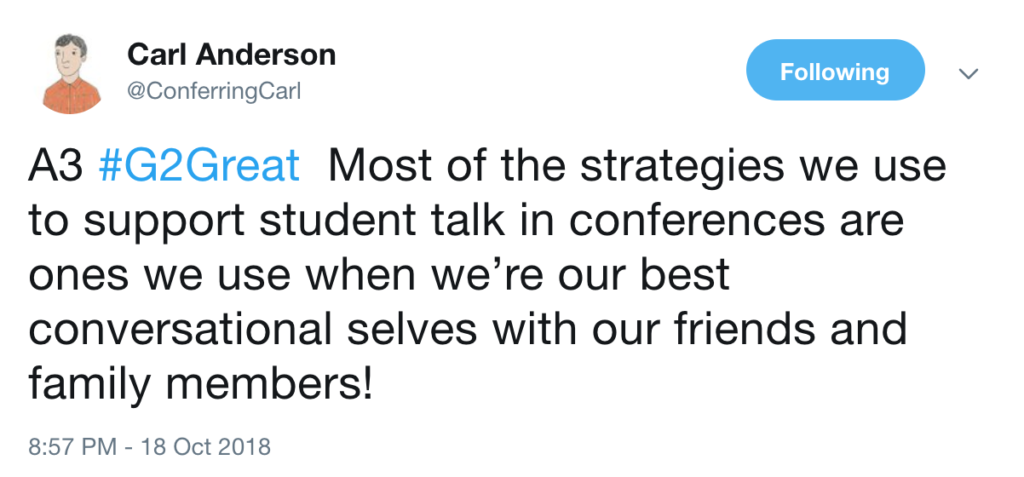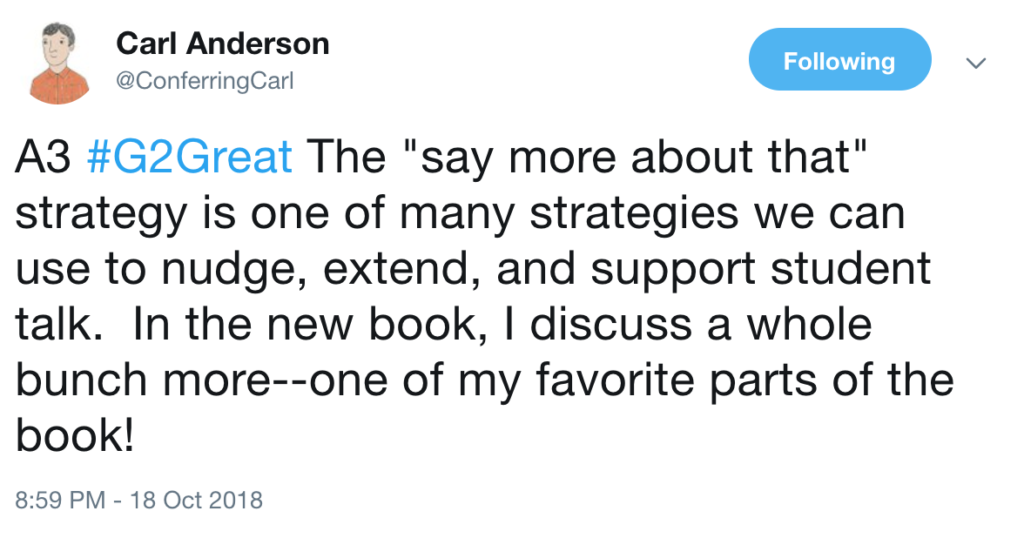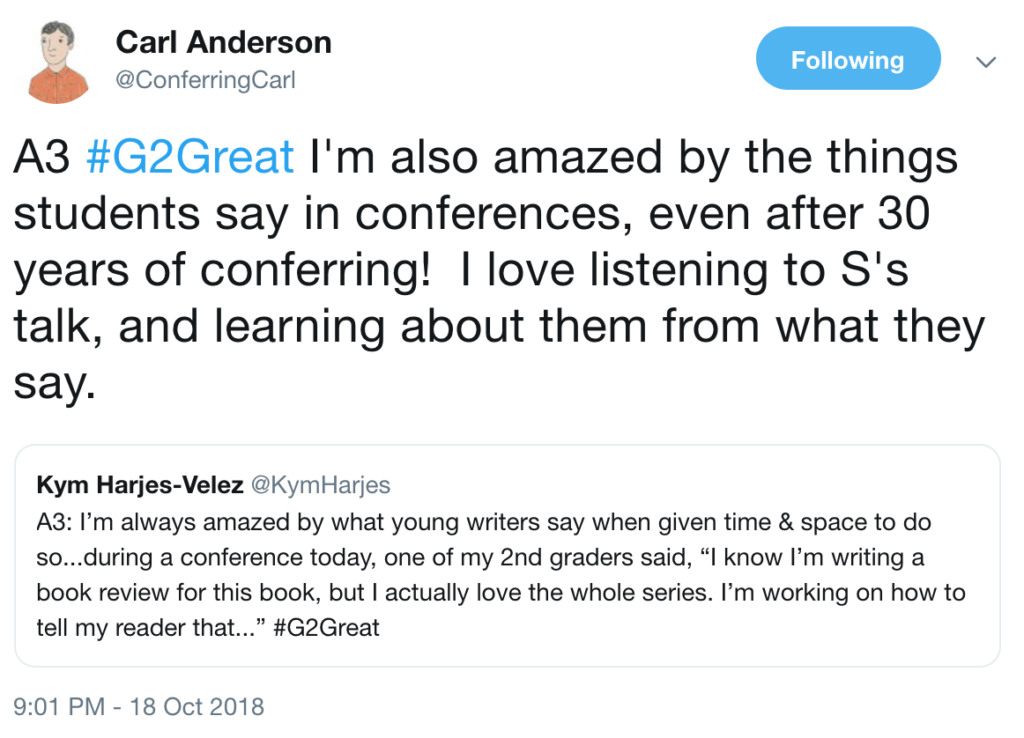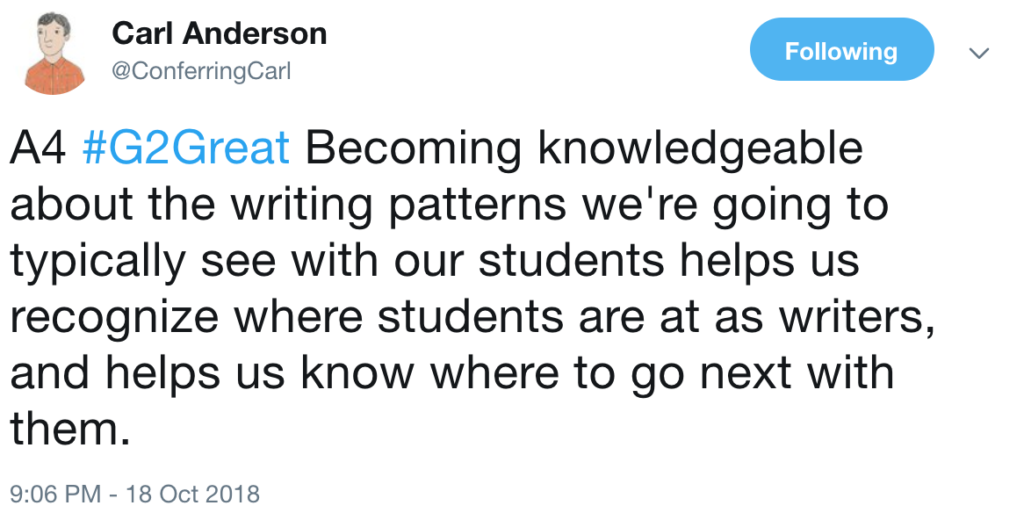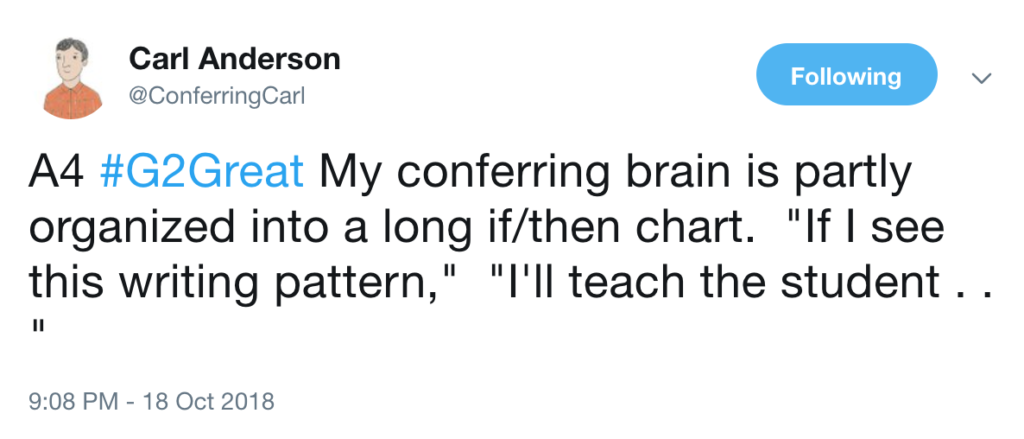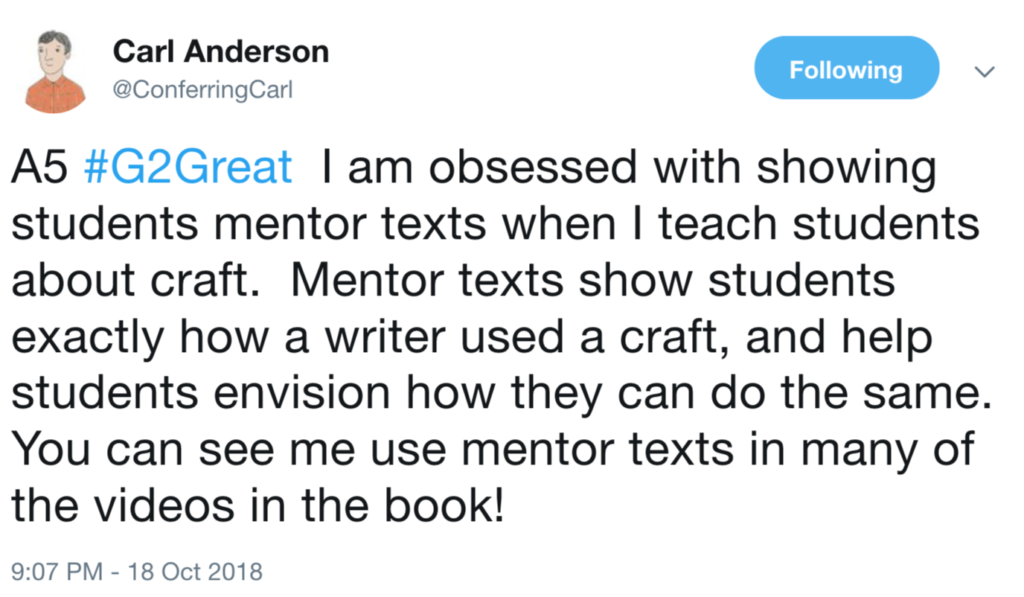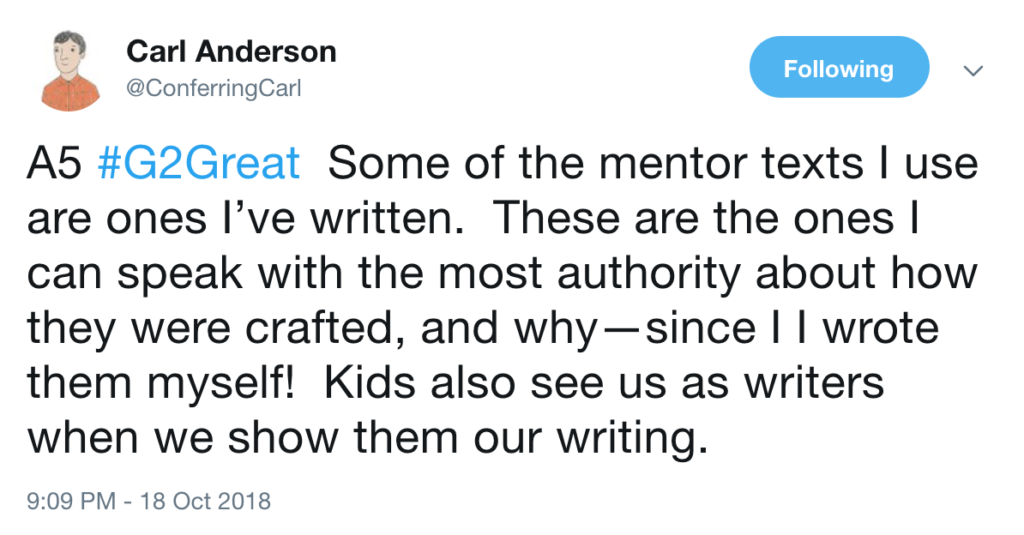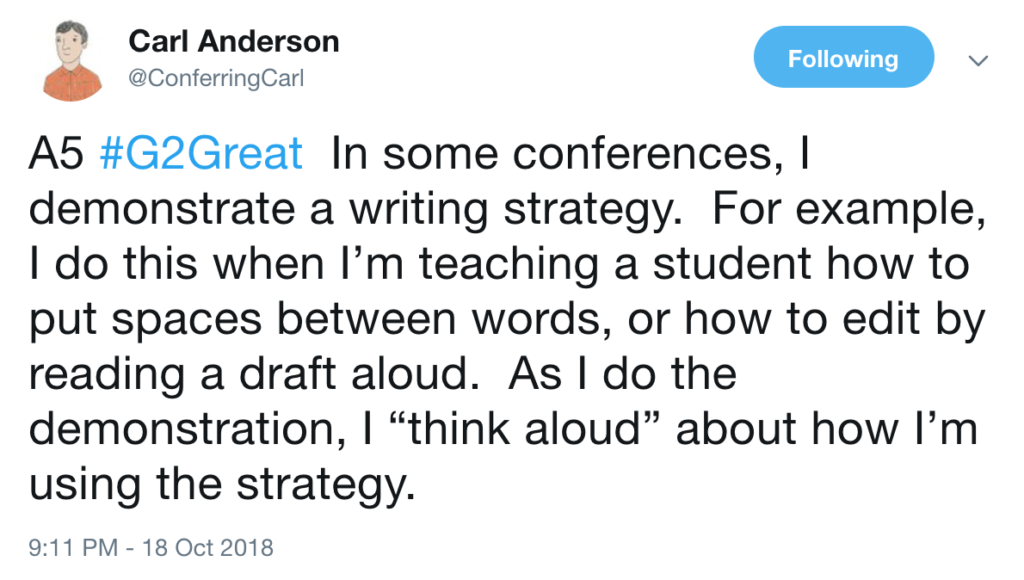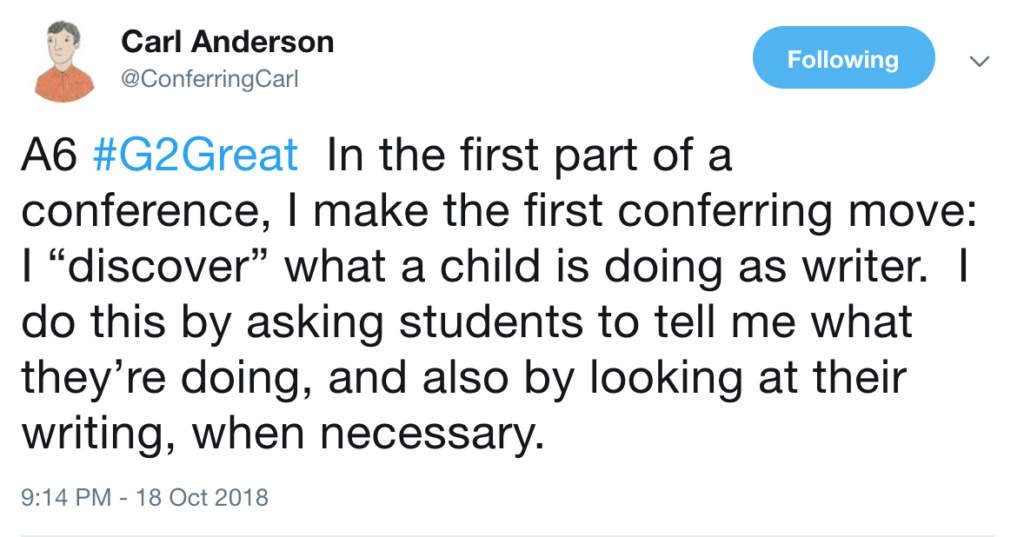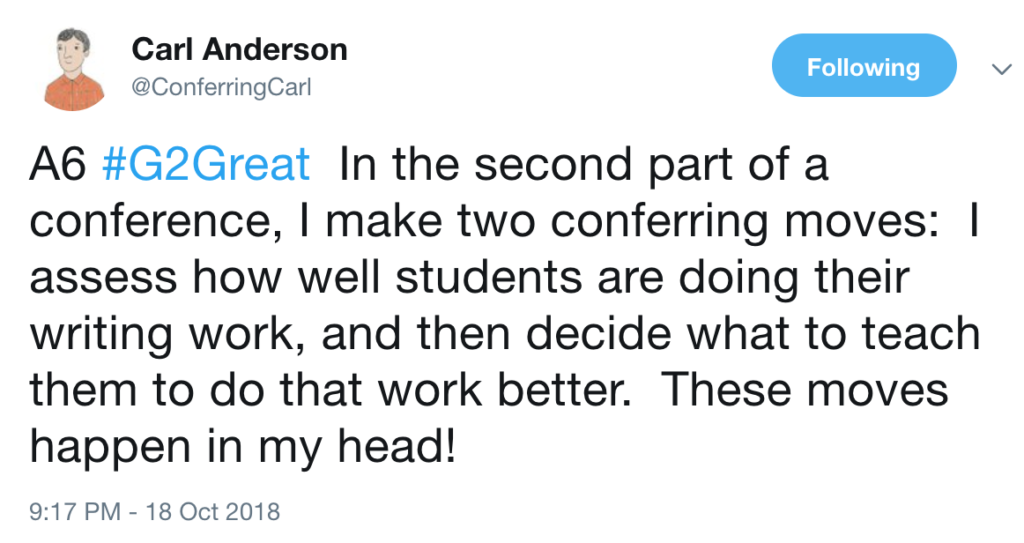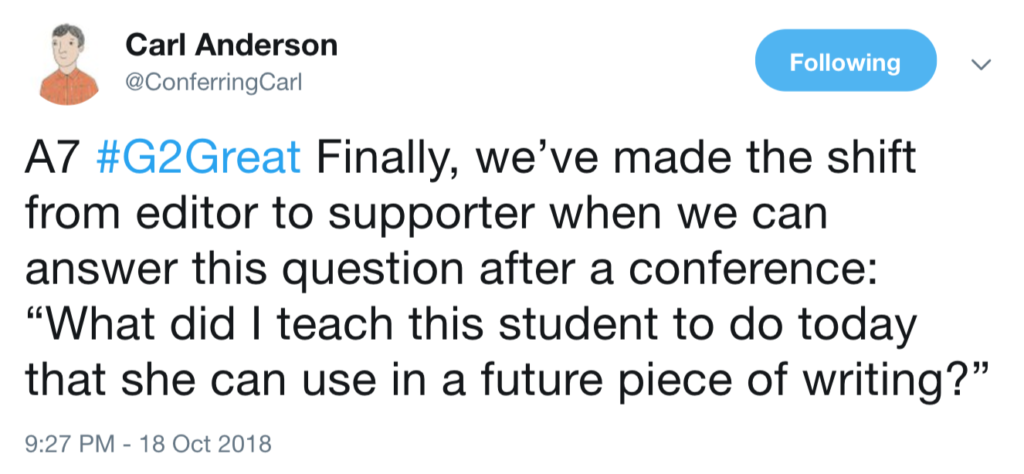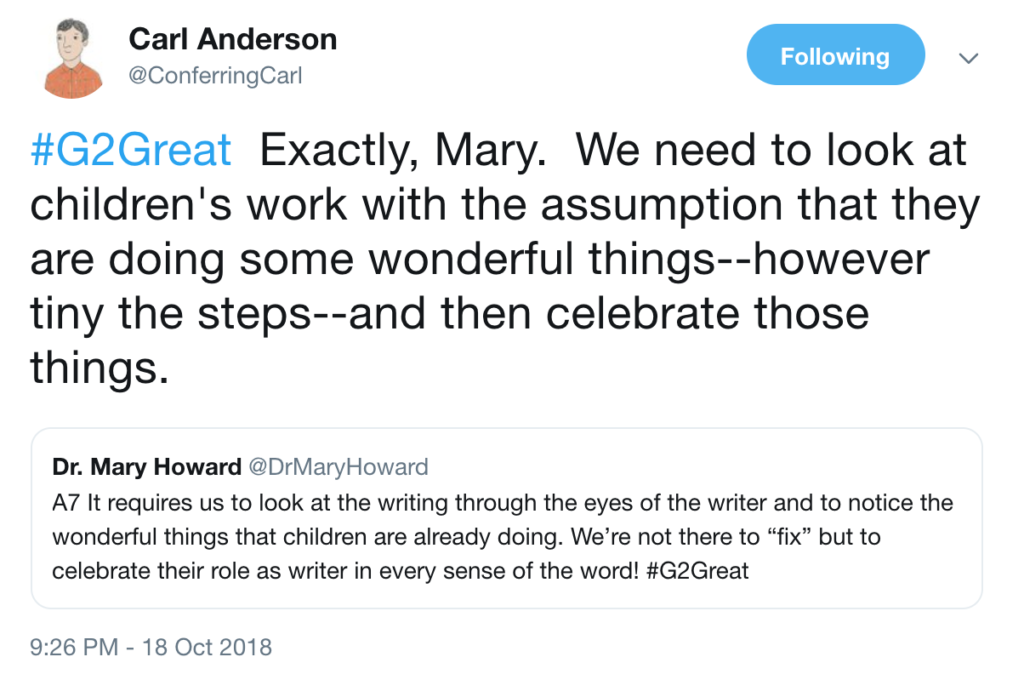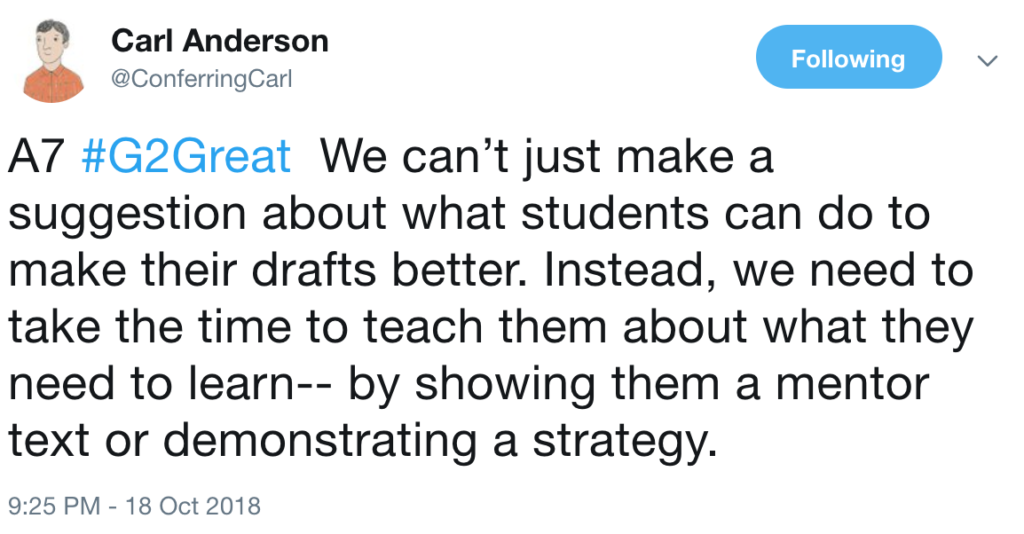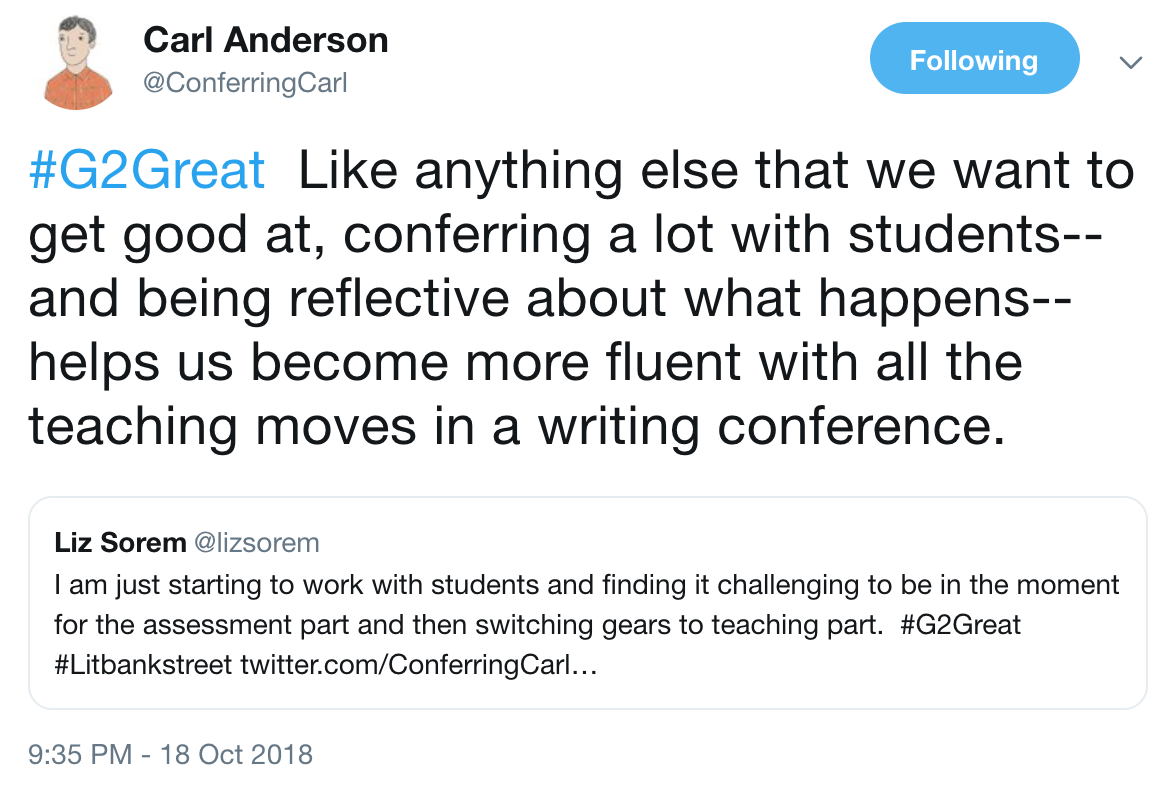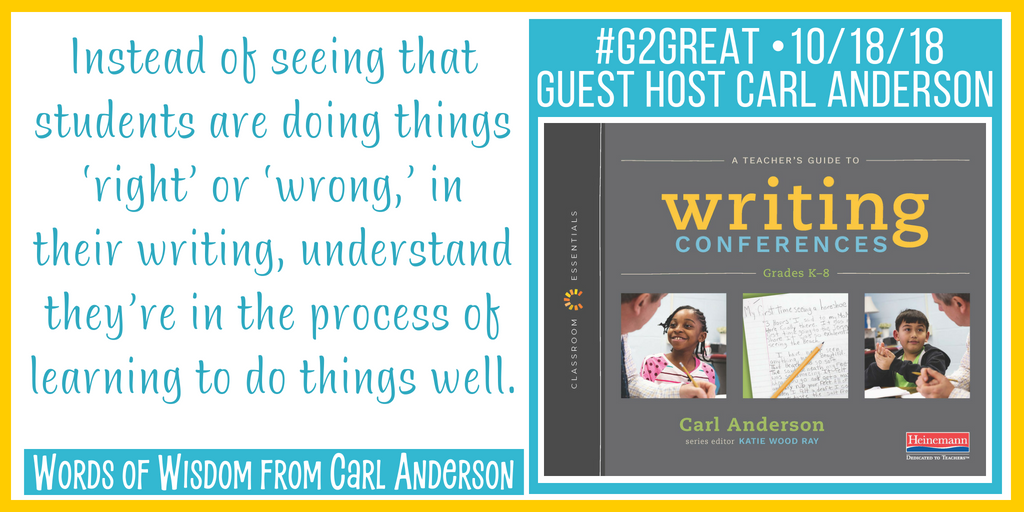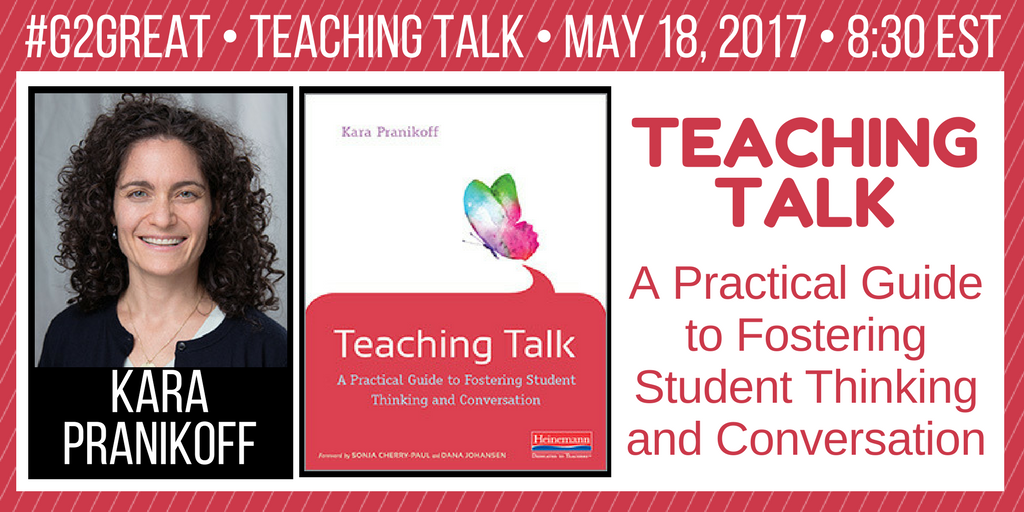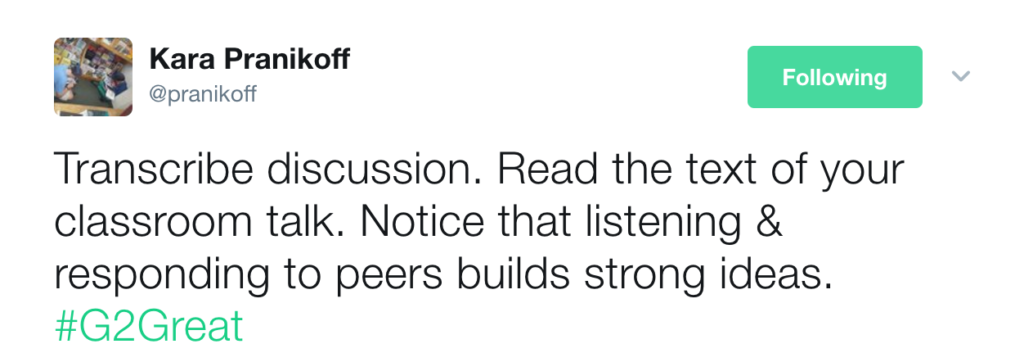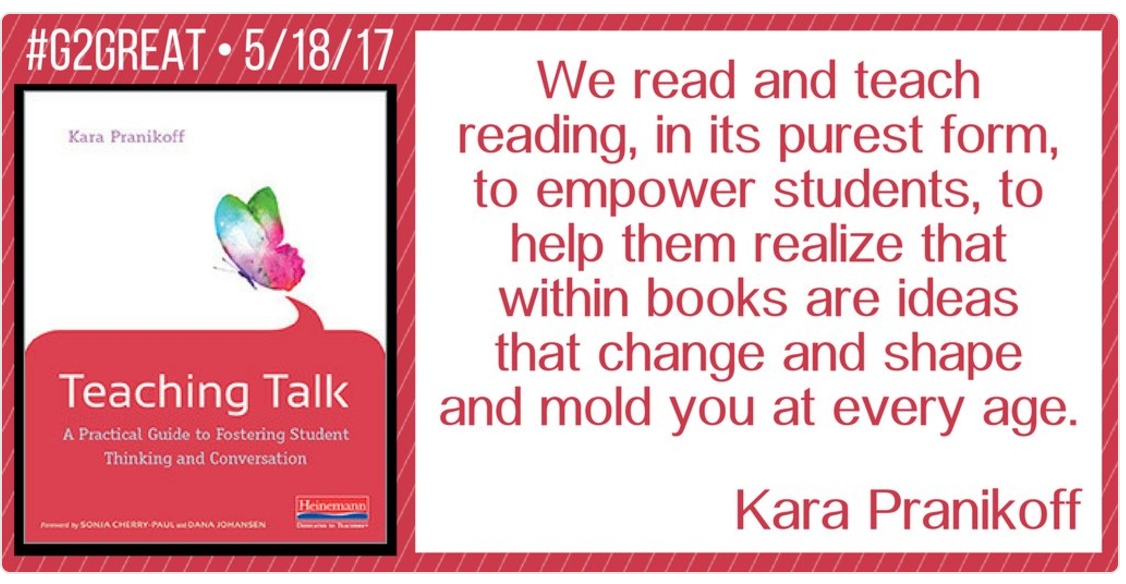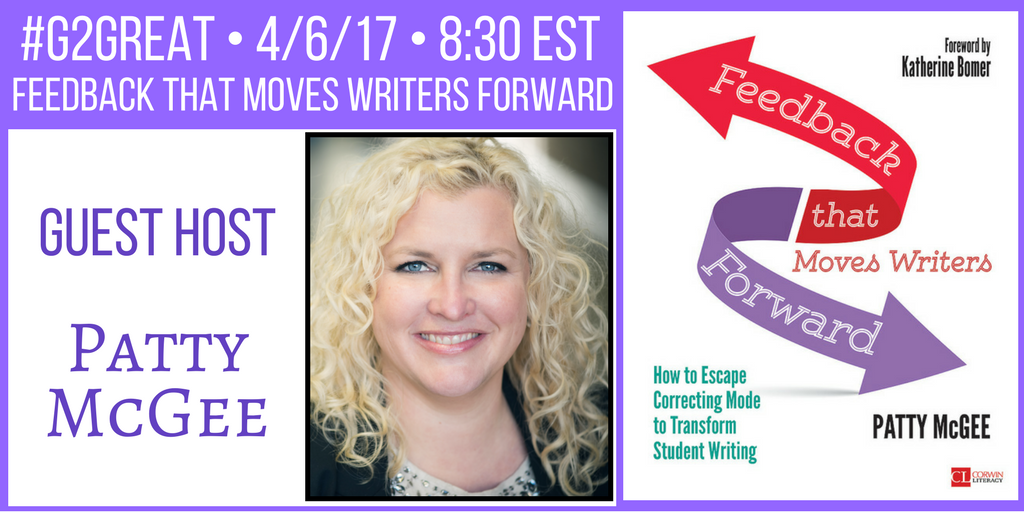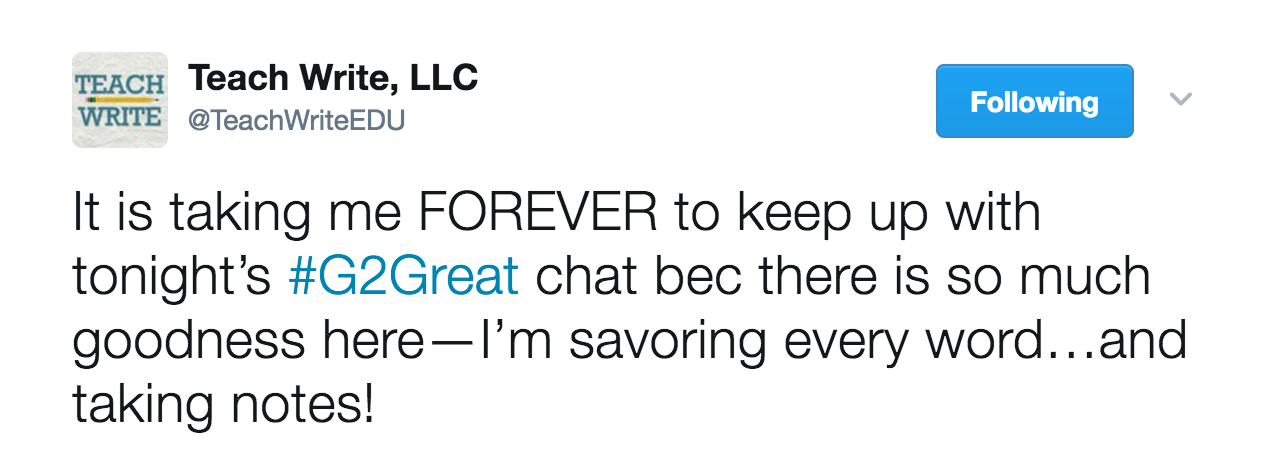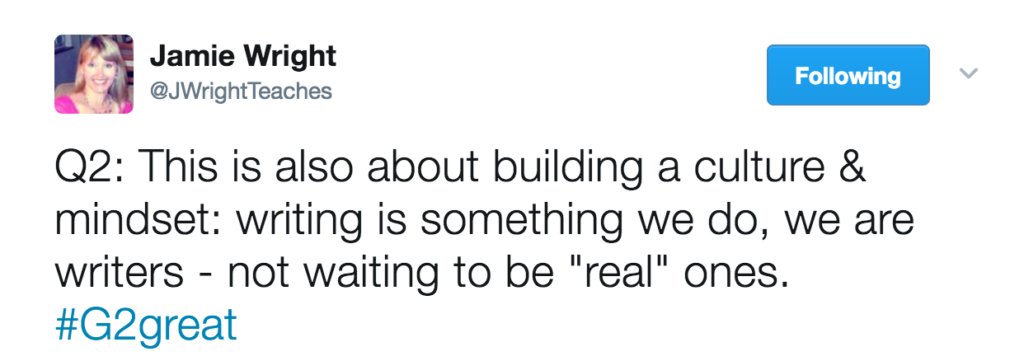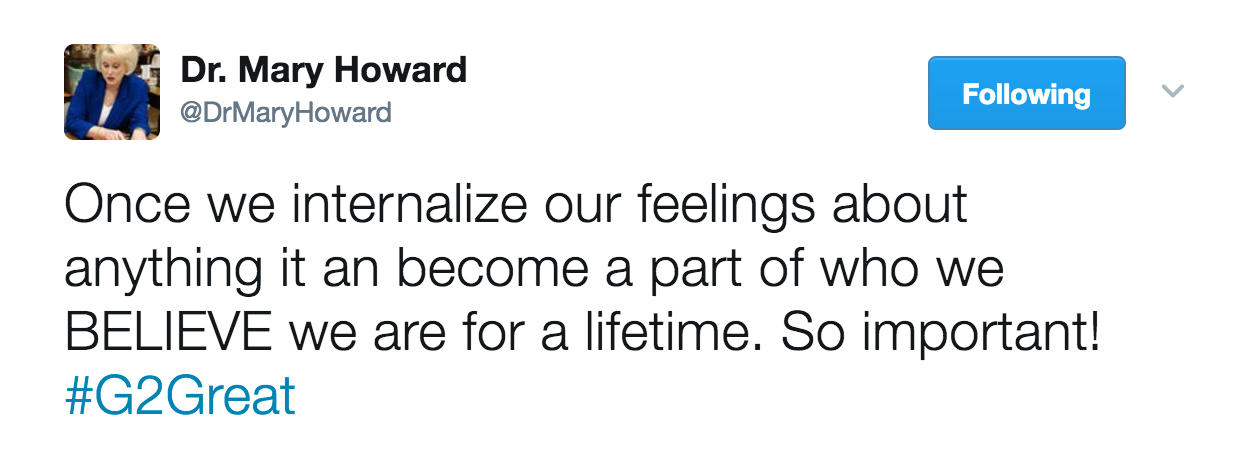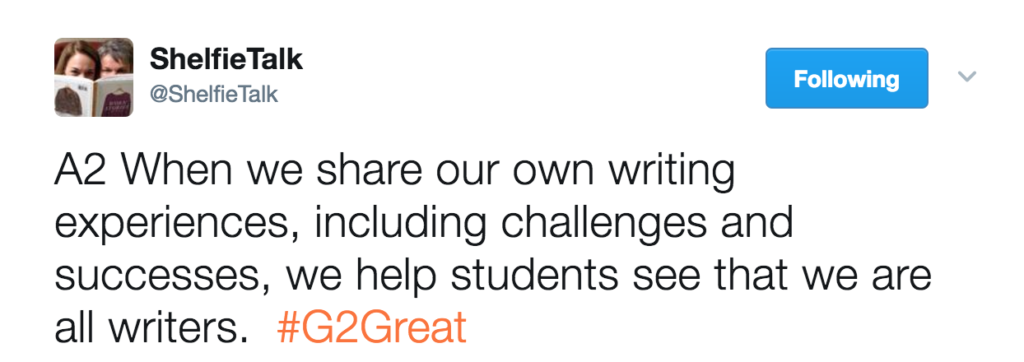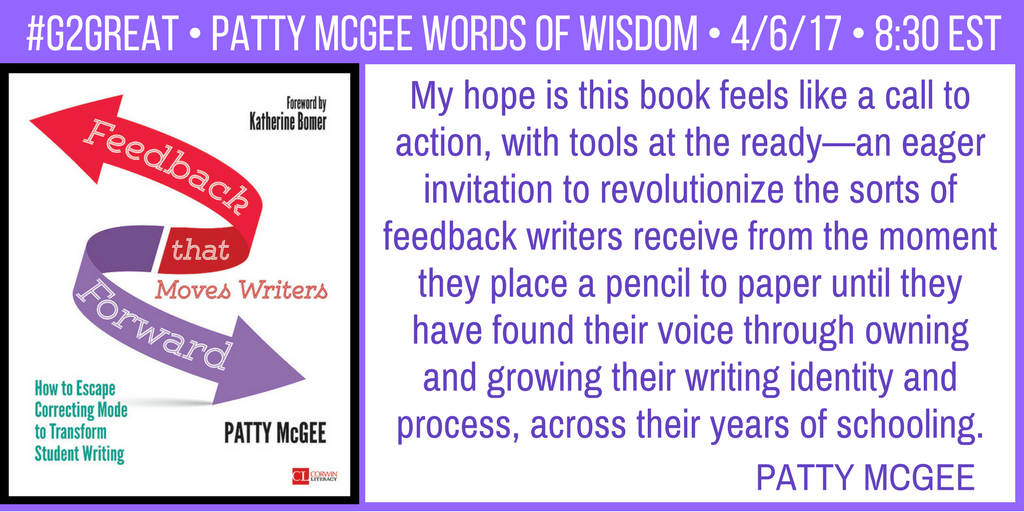by Fran McVeigh

On Thursday, June 24th, Kelly Boswell joined the #G2Great chat to discuss her book, Every Kid a Writer: Strategies That Get Everyone Writing. Other books by Kelly include: Crafting Nonfiction Intermediate and Solutions for Reading Comprehension coauthored with Linda Hoyt and these two by herself, Write This Way: How Modeling Transforms the Writing Classroom and Write This Way From the Start.
This is one of those blog posts that I began early in order to process the information and to do justice to the topic amidst a busy summer. I reread Kelly’s book. I listened to her podcasts. I reviewed her quotes and then fresh off four days of writing institute, I wrote three or four possible hooks. As the chat ended, I raced to my draft “possibilities” document full of joy. The chat had been exhilarating. Joyful. Respectful. Packed with ideas. And so student-centered. But I couldn’t find a way to begin this post. Or more accurately, I couldn’t find a way that I liked well enough to begin this post. I chalked it up to being tired and waited to reread the Wakelet Friday morning to save some tweets to use. But I was stuck without an appropriate introduction.
Saturday started out with a fantastic Text, Talk, and Tea Zoom with Clare, Franki, Laura and Lynsey. After they shared their text set, I kept returning to several ideas from Colleen Cruz’s keynote closing for the #TCRWP writing institute. Colleen talked about the trust that students place in their teachers and how we need to celebrate that trust and learning in order to appreciate, amplify and pass the mic. Here’s her slide:
Appreciate. Amplify. Pass the mic.
We can do that because we find JOY and LOVE in students’ writing when we remove barriers and focus on providing the instruction that supports them in writing. This joy and love was what I saw as the vision behind Kelly’s book and the reason that her writing strategies DO get everyone writing. There’s no blaming students. There’s no shaming students. There is an expectation and a vision that everyone can write . . . once the environment and instruction is prepped for them. We can do that because we are ALSO writers and we value both process and product. We value writing… and writing… and writing!
After finding my own connections to Kelly’s book, I wanted to honor her purpose in writing this book because I, too, have heard these questions.
What motivated you to write this book? What impact did you hope that it would have in the professional world?
This book is a response to the question I hear the most from the teachers with whom I work – “What about those kids who don’t like to write?”
Many of us, at one time or another, have found ourselves in the company of a few (or perhaps more than a few) students who shrug when asked about their writing. They slump in their chairs instead of jumping into writing with energy and vigor. They sharpen pencils or ask for the bathroom pass or decide it’s a good time to organize and reorganize their desk. They groan when you announce that it’s time or write or they barrage you with questions along the lines of “How long does this have to be?”
Many teachers mistakenly think that the problem lies with the reluctant student. I had a hunch that, like most things, teachers and classroom environments created either reluctance or engagement.
In this book, I set out to explore this topic – why do the writers in some classrooms seem so reluctant while students in a different classroom dig into writing with enthusiasm and joy? Could we, as teachers, create classrooms and writing experiences that could increase engagement? As I spoke to students and teachers and taught lessons of my own, my hunch was confirmed: The environment and community we create in the classroom, along with some specific, yet simple, teaching strategies, have an enormous impact on how students engage with writing.
And that vision led us to our second question.
What are your BIG takeaways from your book that you hope teachers will embrace in their teaching practices?
One of the biggest takeaways that I hope teachers embrace is that the problem of reluctant writers is NOT the kids. As teachers, we have the power to embrace and use some simple, practical strategies that support ALL kids to engage in writing with enthusiasm and joy. These six strategies are outlined in the book:
We can:
1. Use mentor texts and teacher modeling to fuel engagement
2. Create a safe and daily space for writing
3. Expose writers to real readers.
4. Offer more choice (choice of paper, seating, topic, etc.)
5. Maintain a healthy perspective on conventions.
6. Shape and create a healthy writing identity through assessment

Let’s pull back the curtain and look a little further at some of the six strategies shared by Kelly during the chat.
1. Use mentor texts and teacher modeling to fuel engagement.
2. Create a safe and daily space for writing.

3. Expose writers to real readers.


4. Offer more choice. (choice of paper, seating, topic, etc.)



5. Maintain a healthy perspective on conventions.



6. Shape and create a healthy writing identity through assessment.


In conclusion, I return to the final question for our author and just a few additional thoughts.
What is a message from the heart you would like for every teacher to keep in mind?
As teachers, the goal of all of our planning and teaching and conferring and assessing is, simply this:
- We want kids to fall in love with writing.
- We want kids to find words that they love and never let them go.
- We want kids to see writing as a way to connect with others, share ideas and engage in civil discourse.
- We want kids to know that writing is a powerful tool that they can use to think, reflect, remember and influence others.
- We want kids to discover that the act of writing is its own reward.
- We want them to know, deep in their bones, that writing has so much to give and so much to teach.
- We want kids to live joyfully literate lives.
It starts with us.
When we provide time for students to joyfully tell their stories, we must Appreciate. Amplify. And pass the mic! This mutual respect and trust between writers and teachers of writing results in classrooms filled with joy, purpose and energy. To conclude, a repeat of the closing quote from the chat, in Kelly’s own words:
Let’s get started!
Additional Links:
Blog Posts (Heinemann): https://blog.heinemann.com/conferring-with-kids-remotely-tips-for-remote-writing-conferences-from-kelly-boswell
https://blog.heinemann.com/positive-practices-for-you-and-your-students
Books: https://www.amazon.com/Kelly-Boswell/e/B00E59W45Q?ref=sr_ntt_srch_lnk_3&qid=1620140304&sr=8-3
Article: https://www.languagemagazine.com/2020/02/19/harnessing-the-power-of-a-teachers-pen-2/
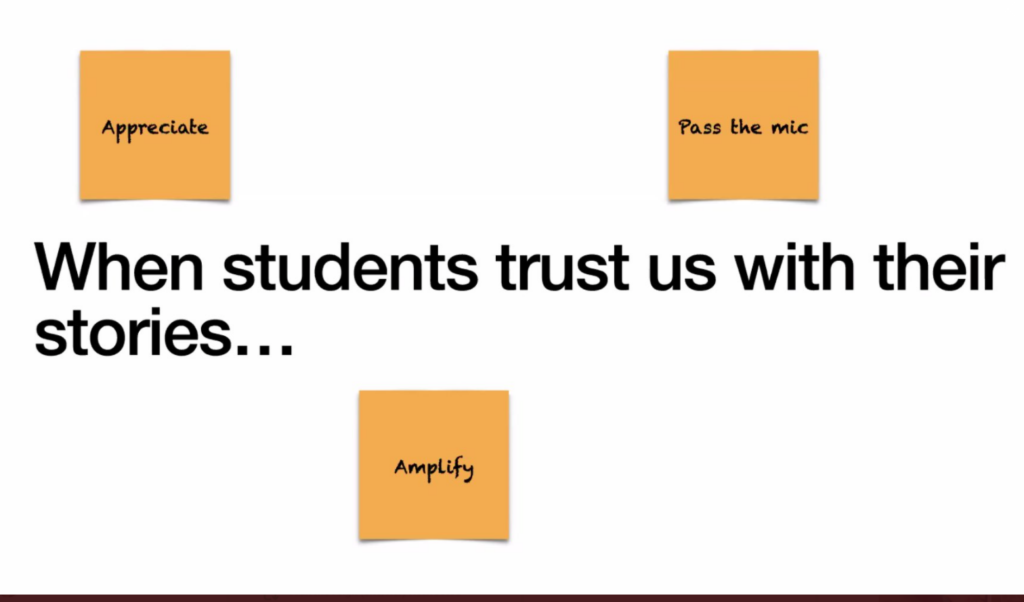
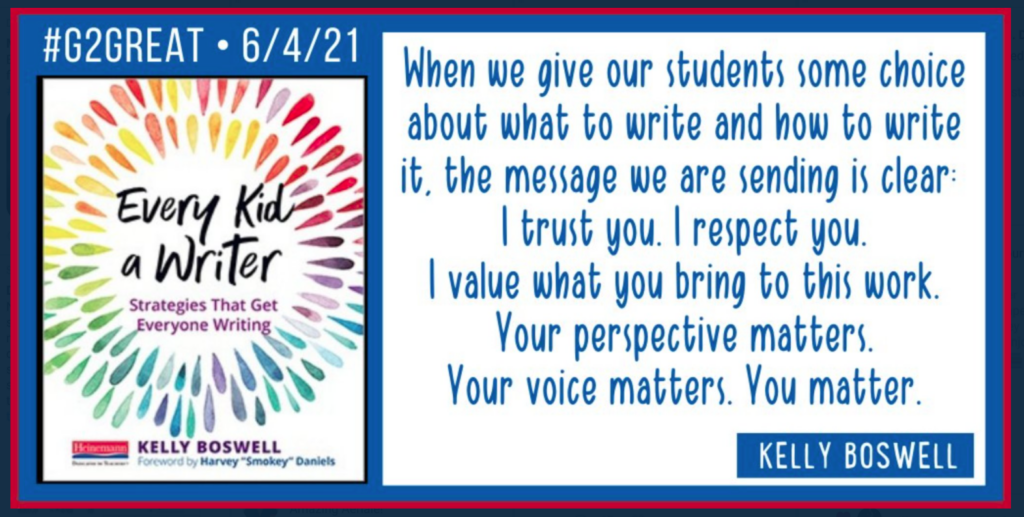
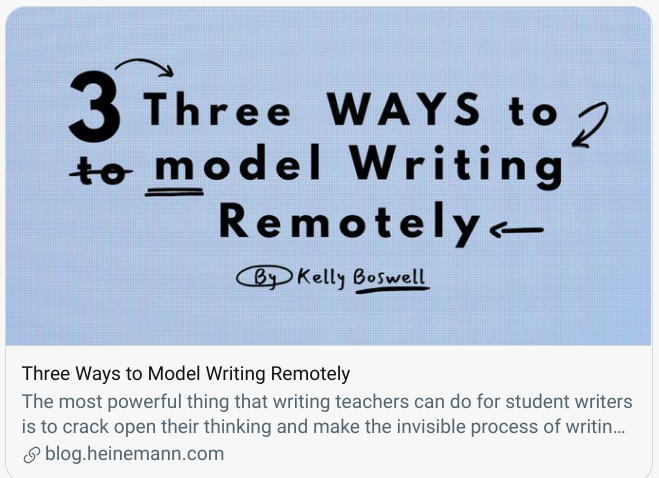
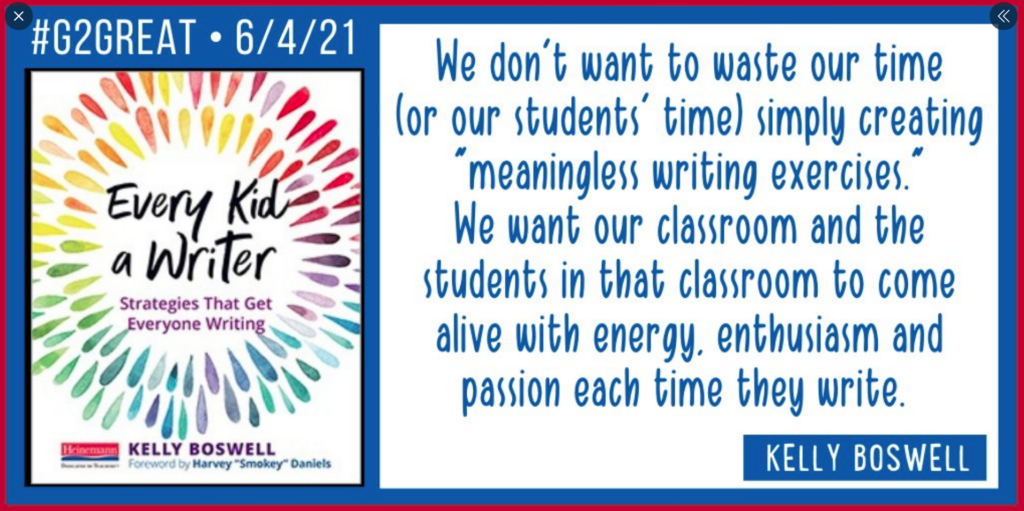

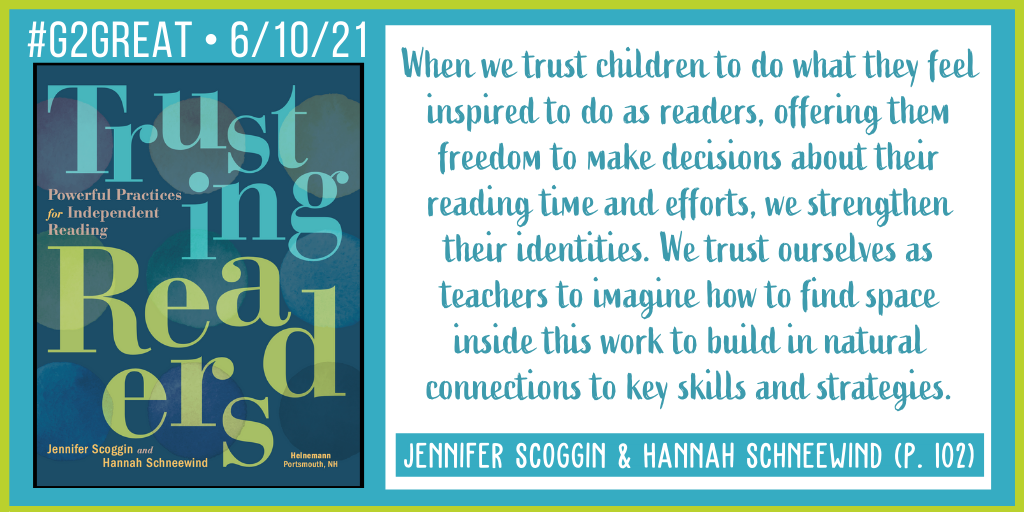
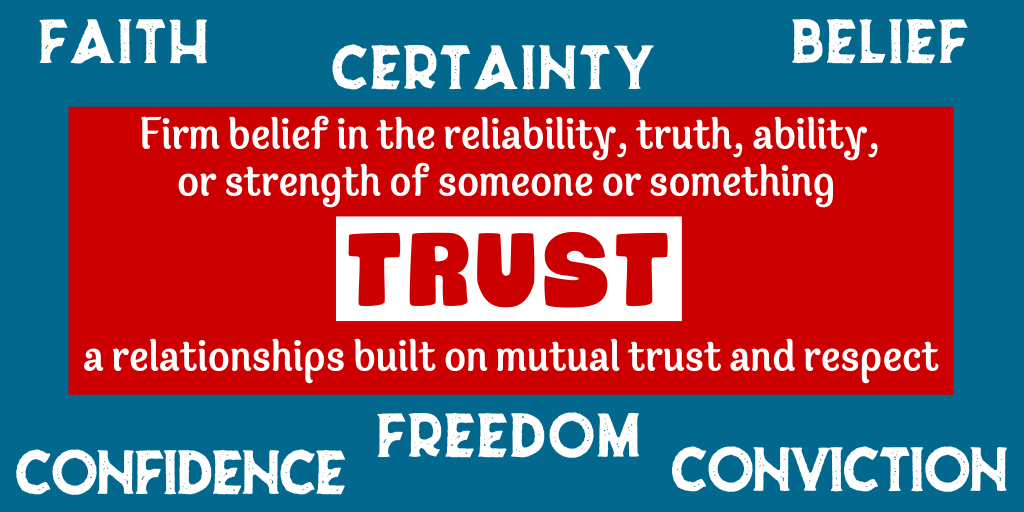
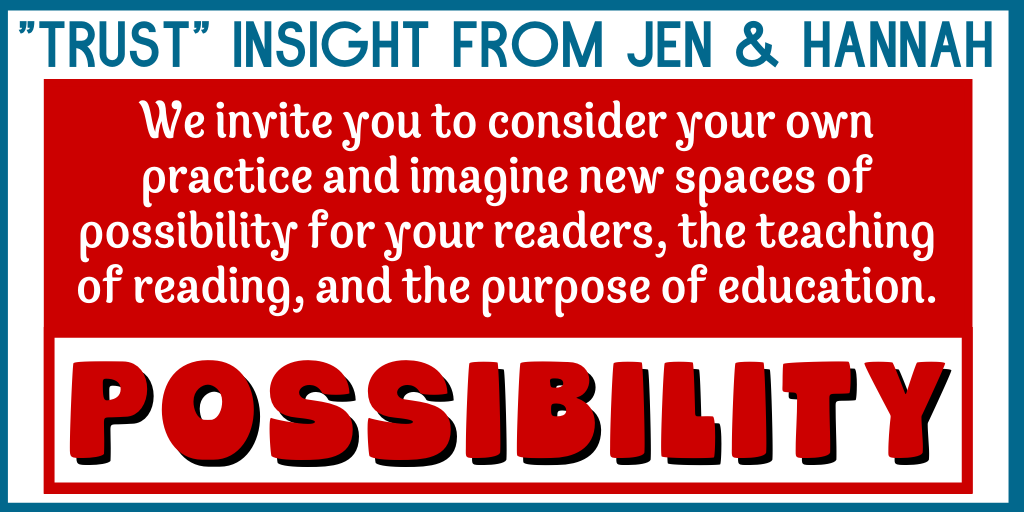
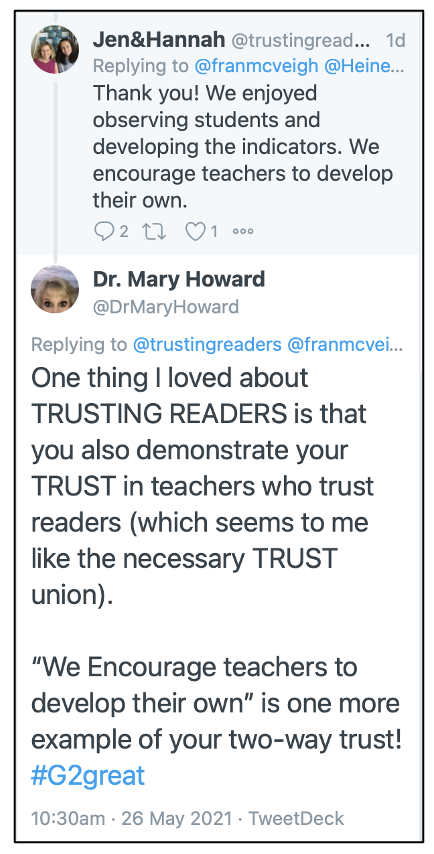
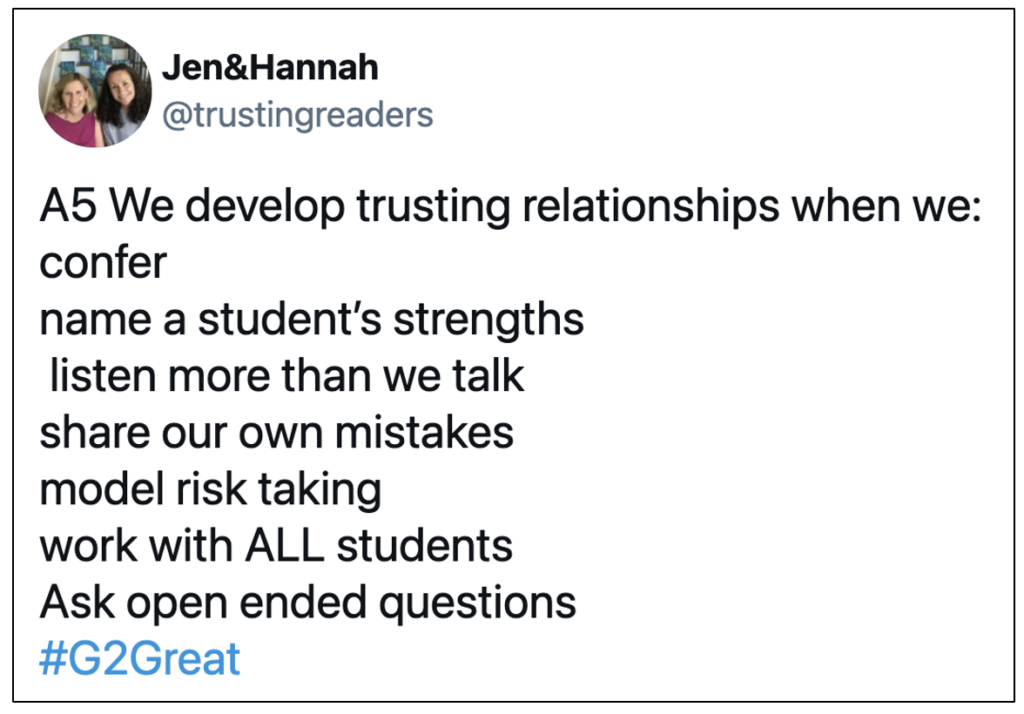








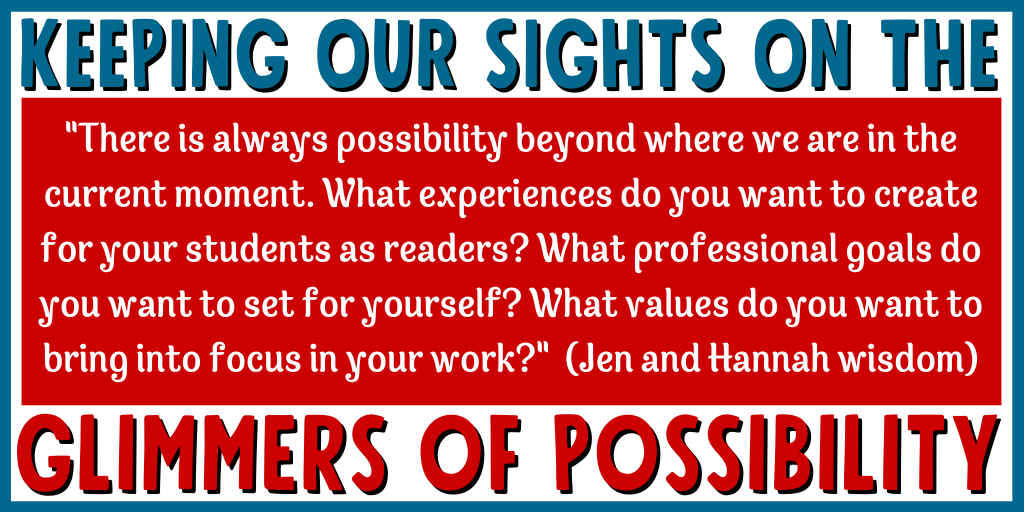
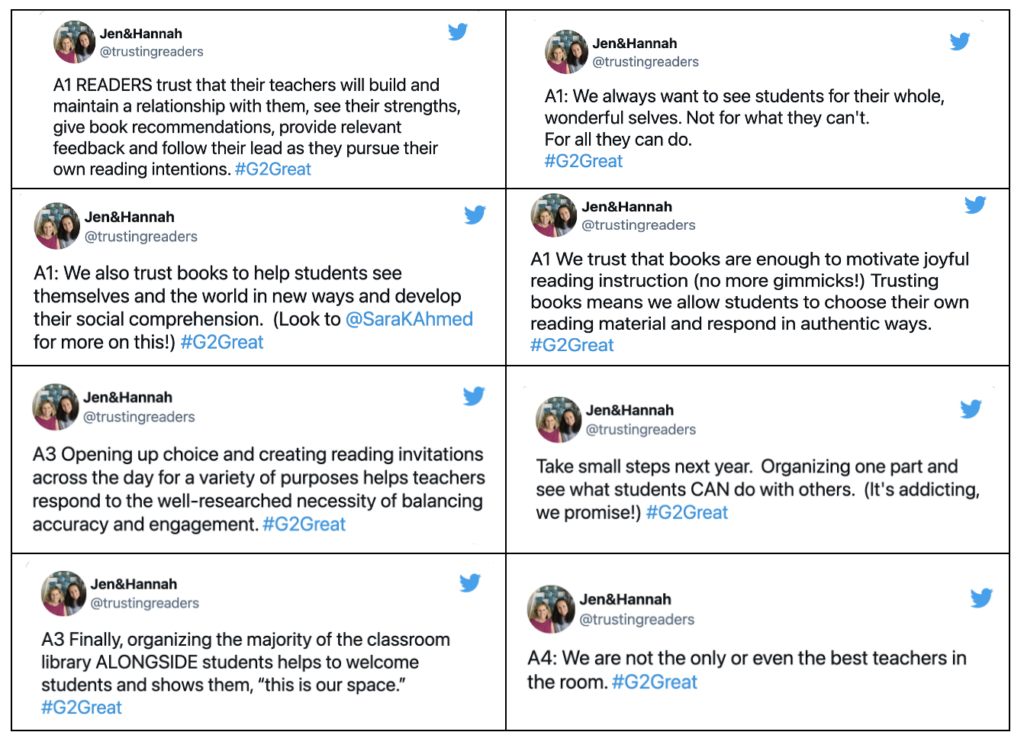
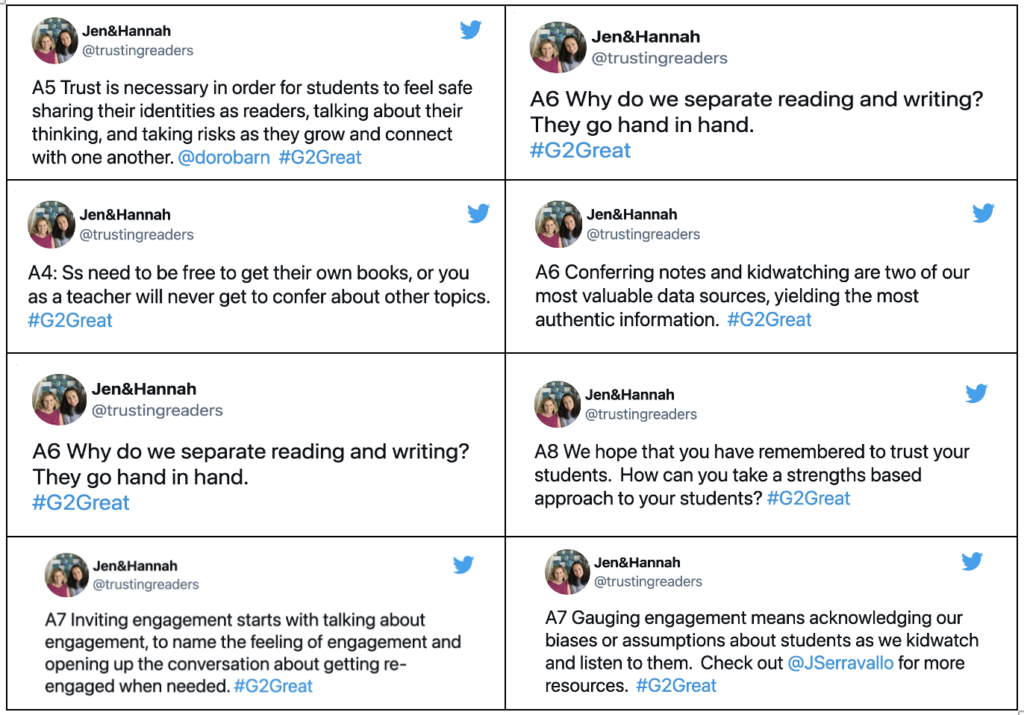
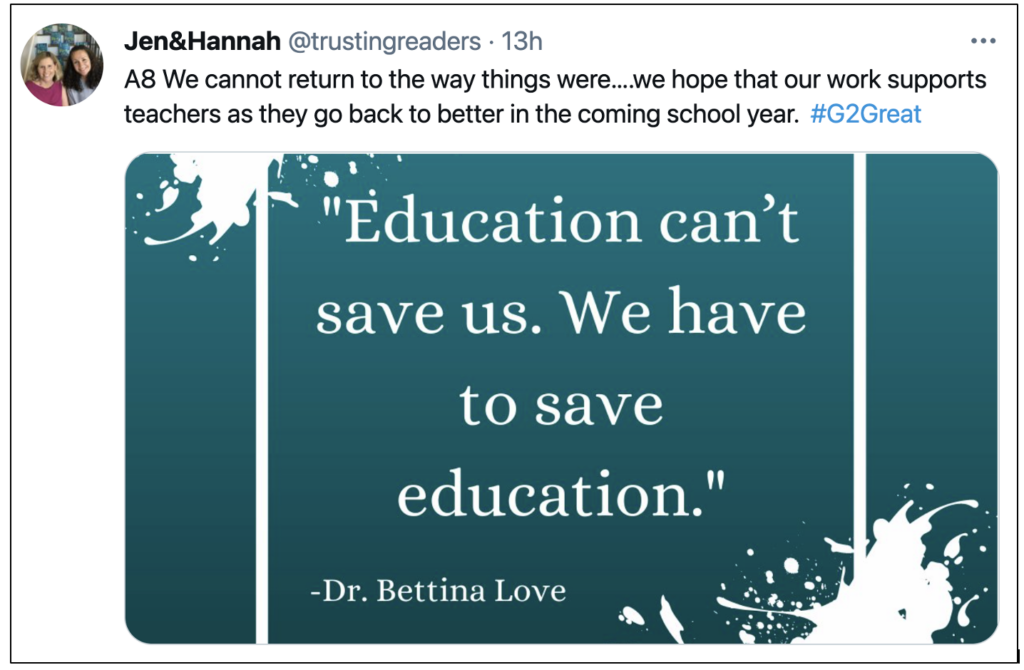

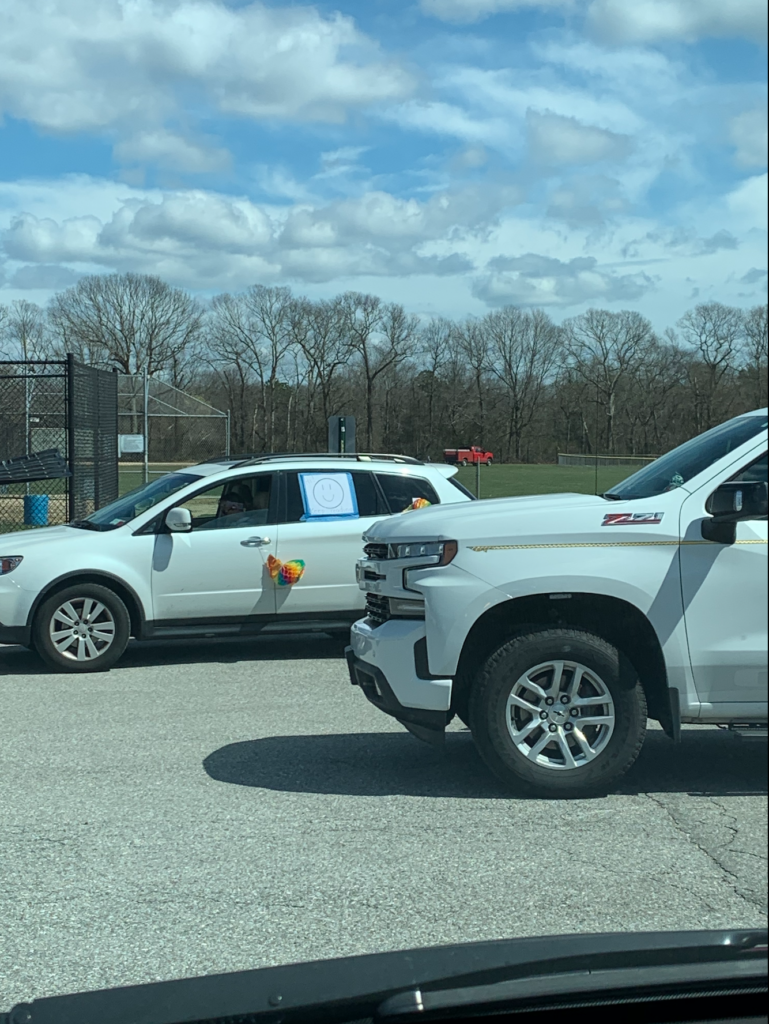
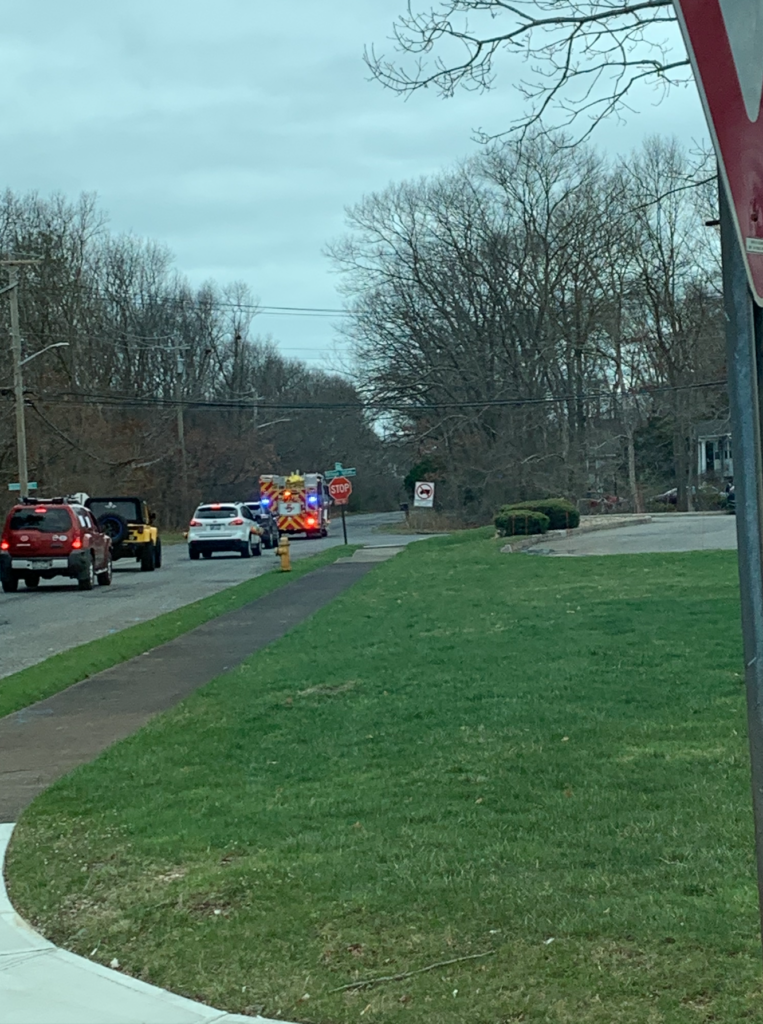
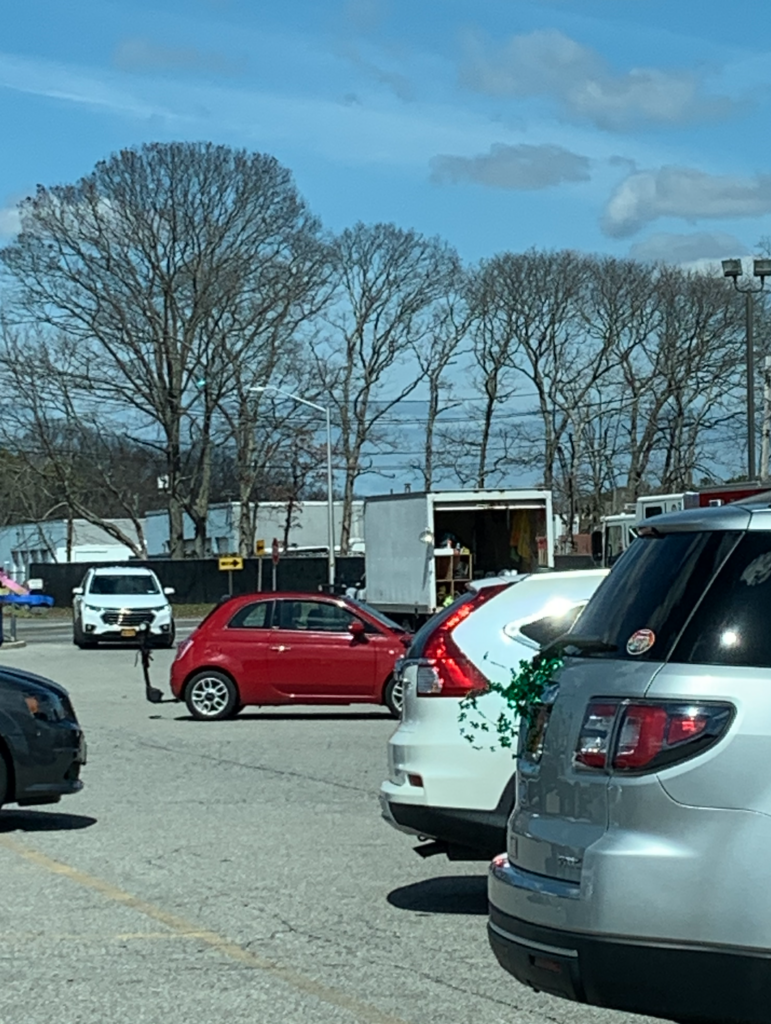
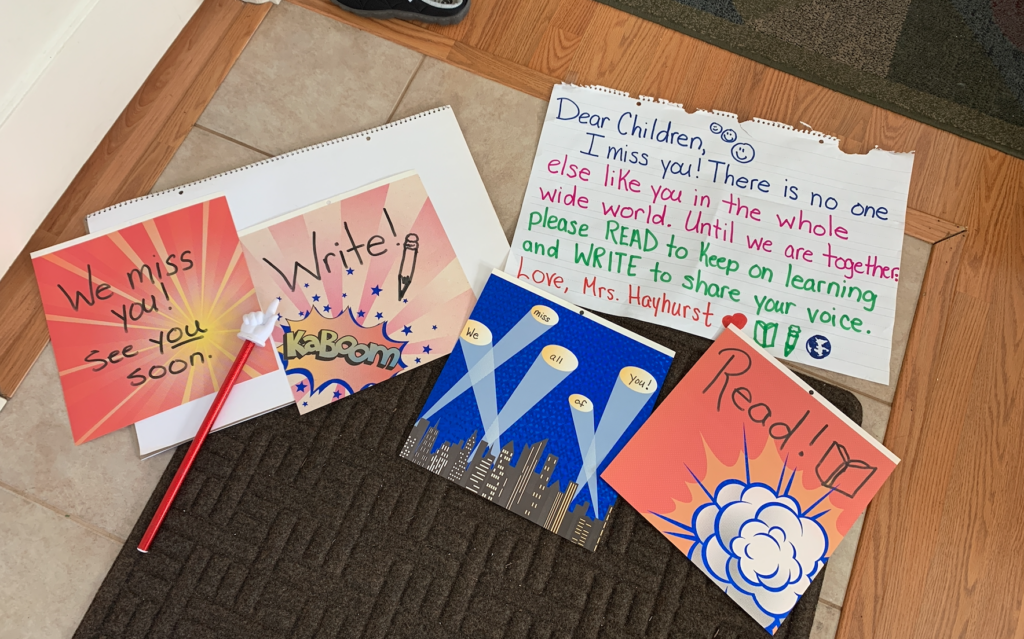

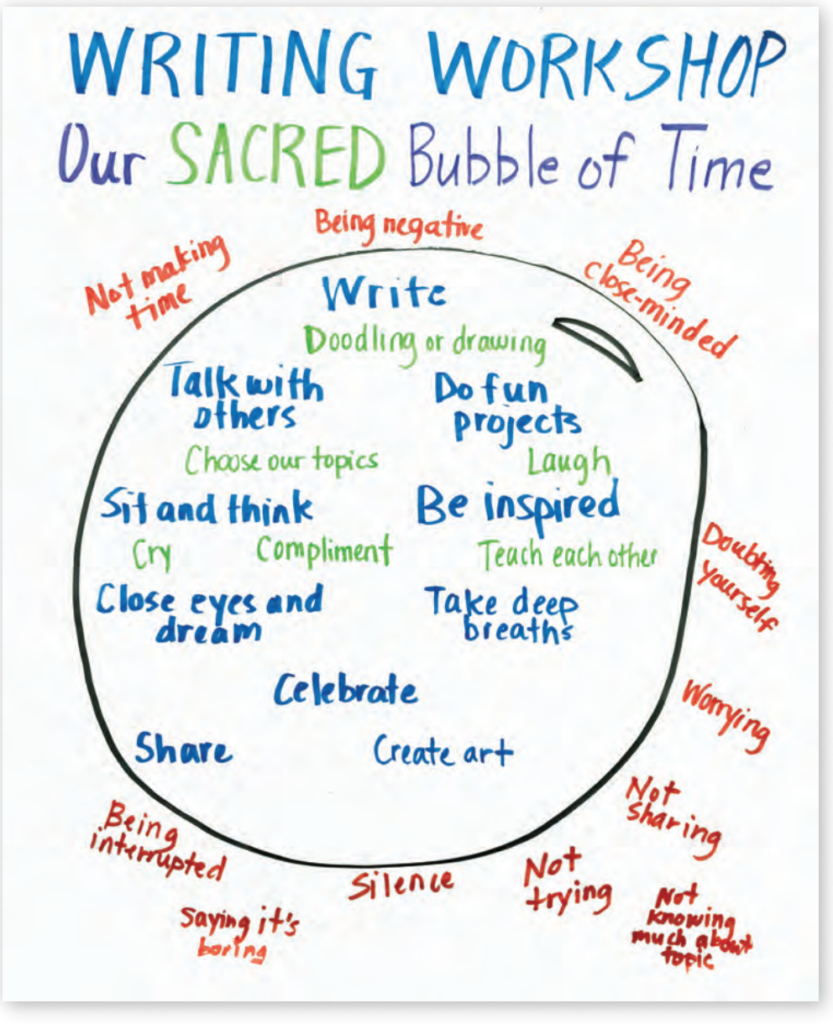


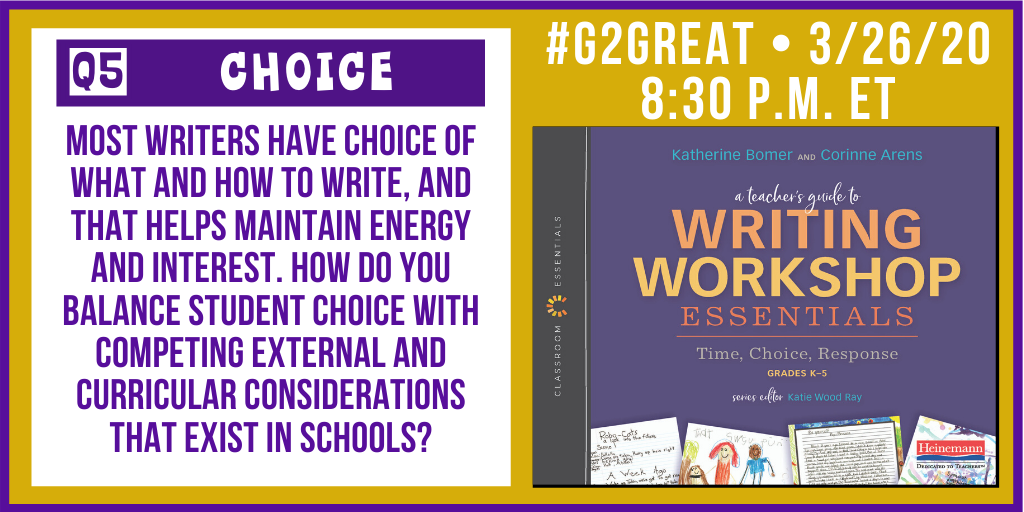
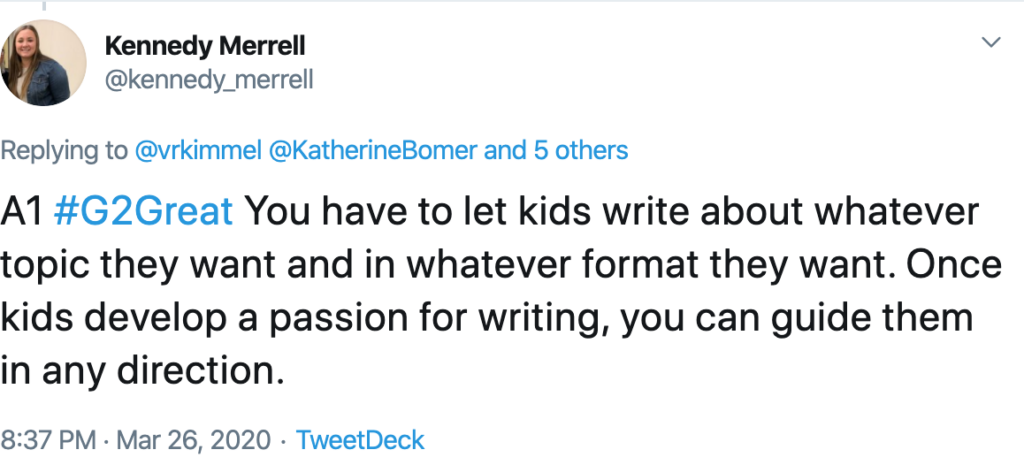


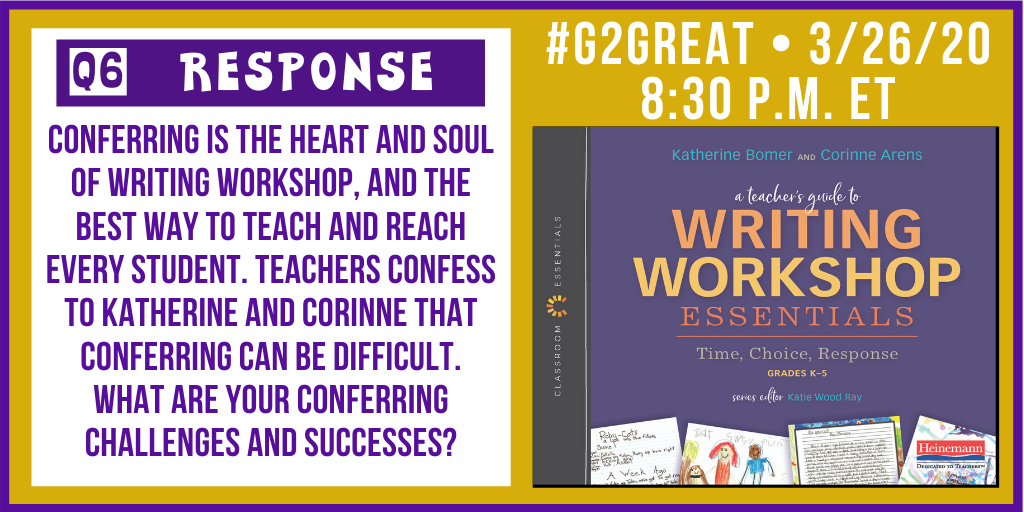



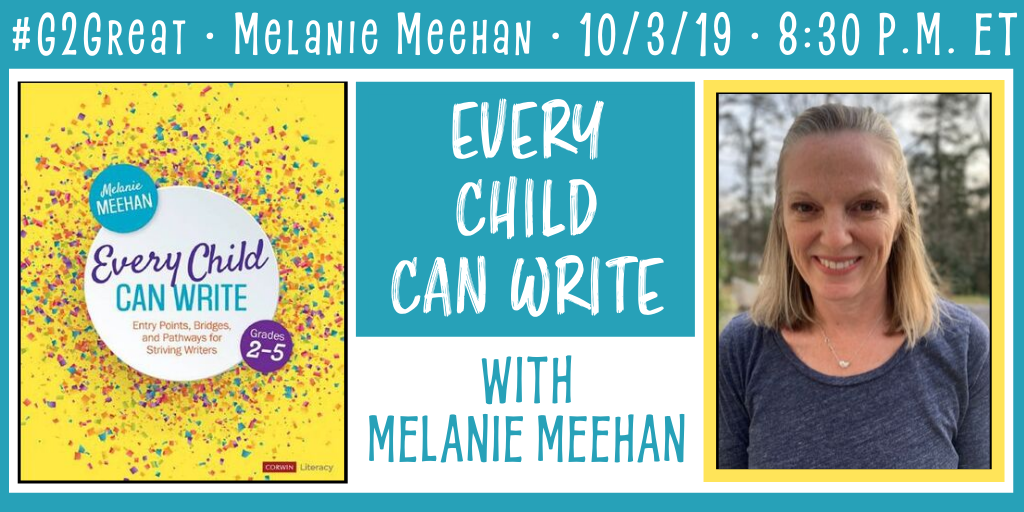
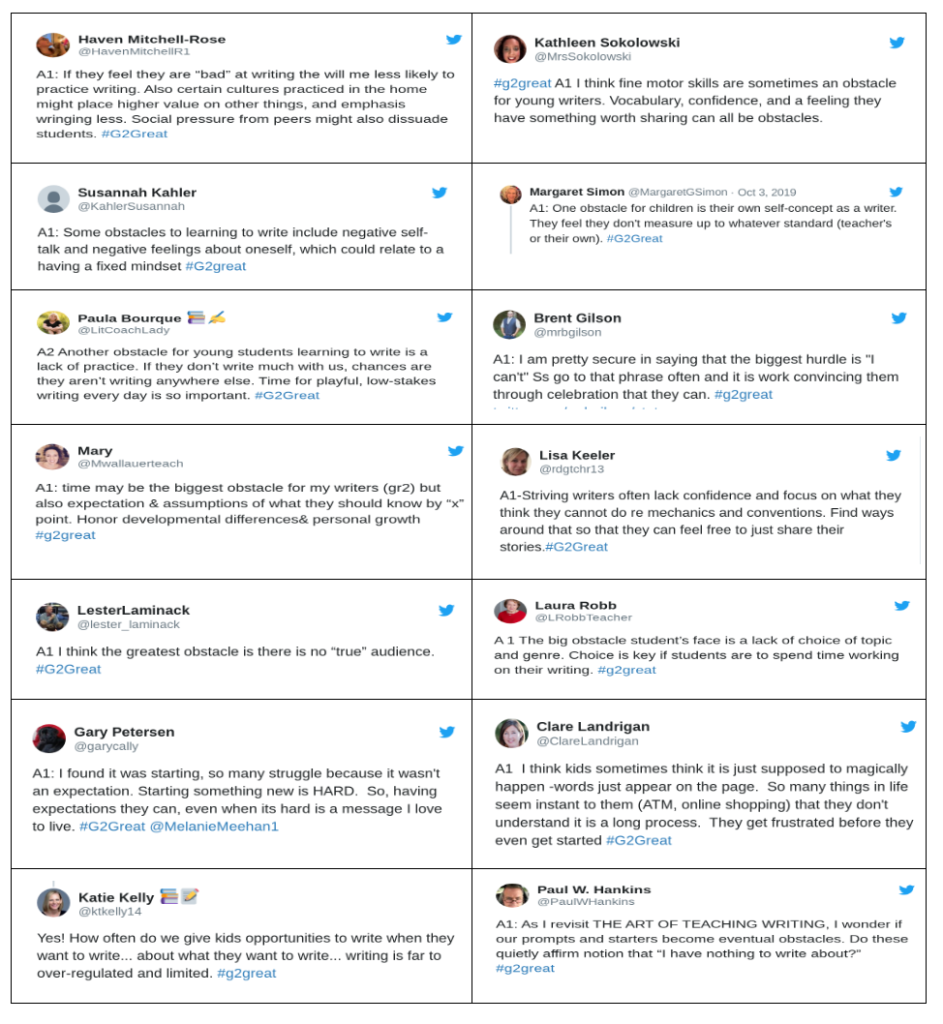

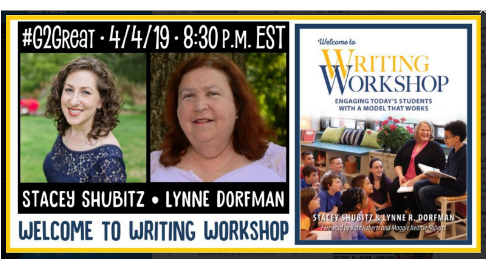
 Stacey: Write alongside your students no matter how uncomfortable it feels at first. Keep doing it. Day after day, it will become easier. If you’re writing, then you’re part of the classroom community of writers and that is the secret to being a great teacher of writing.
Stacey: Write alongside your students no matter how uncomfortable it feels at first. Keep doing it. Day after day, it will become easier. If you’re writing, then you’re part of the classroom community of writers and that is the secret to being a great teacher of writing.




